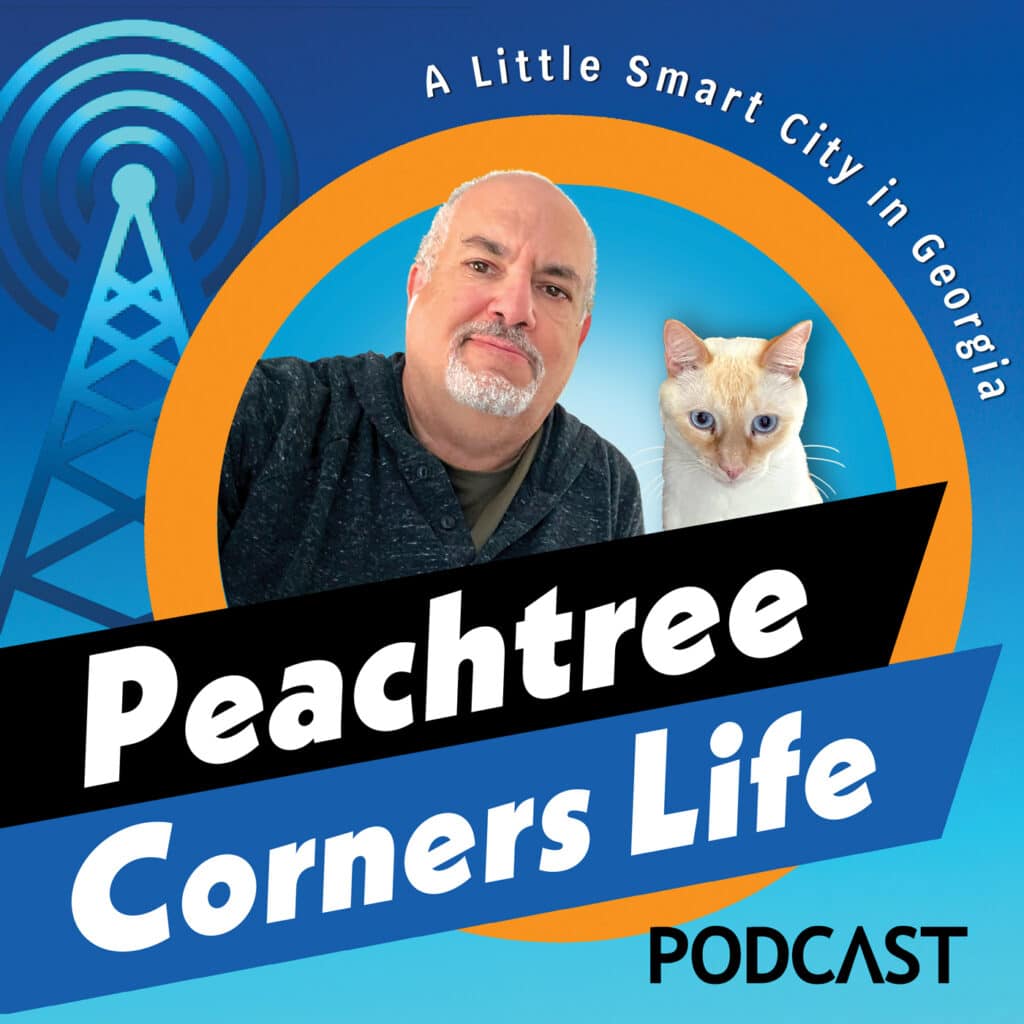Around Atlanta
High Museum Announces Touring Exhibition Exploring Rise of Self-Taught Artists
Published
4 years agoon
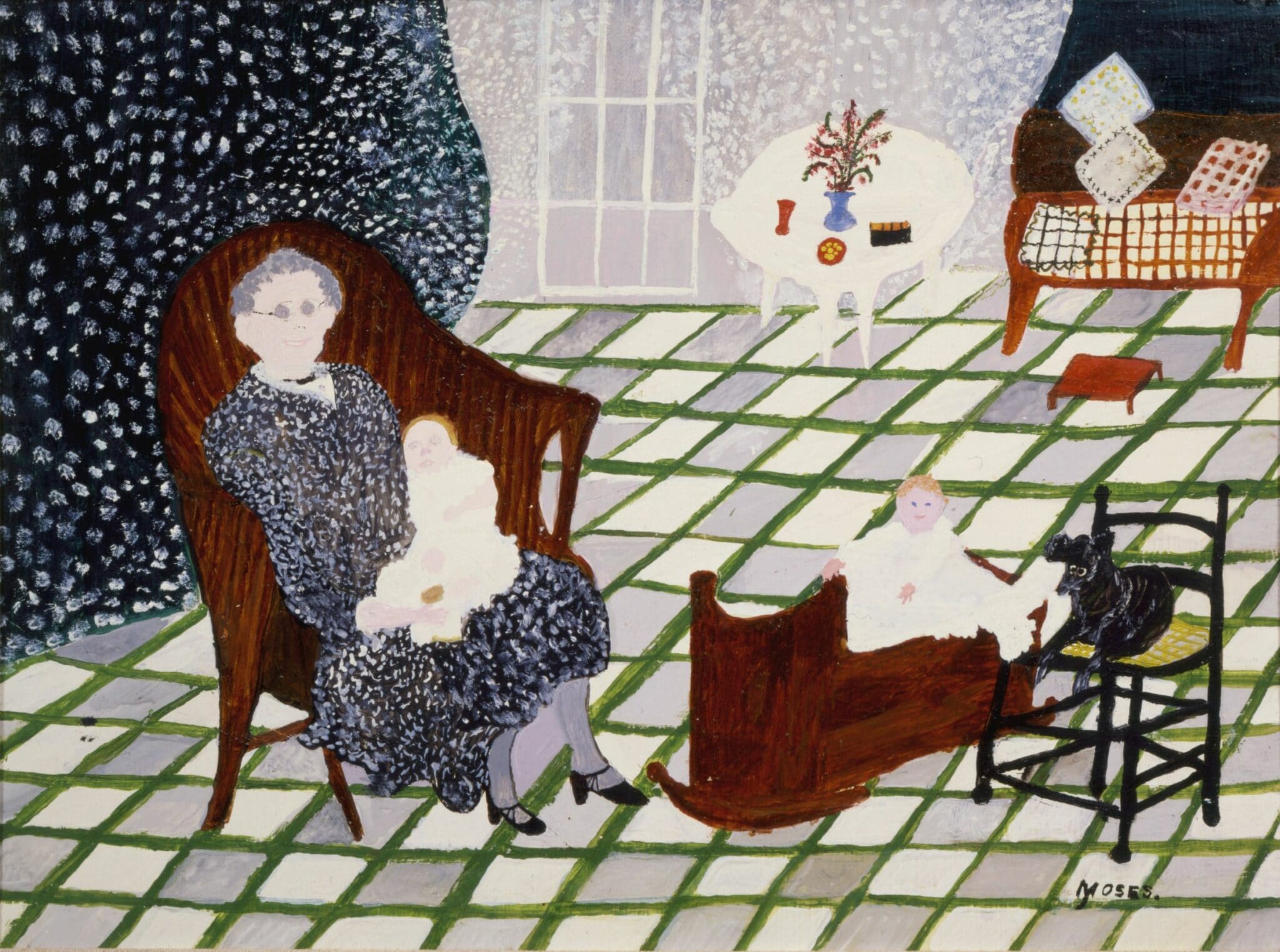
The High Museum of Art exhibition “Gatecrashers: The Rise of the Self-Taught Artist in America,” debuting this summer (Aug. 20-Dec. 11, 2021) and set to tour nationally, will celebrate more than a dozen early-20th-century painters who fundamentally reshaped who could be an artist in the United States. Featuring more than 60 works, “Gatecrashers” will investigate how artists including John Kane, Horace Pippin and Anna Mary Robertson “Grandma” Moses overcame class-, race- and gender-based obstacles to enter the inner sanctums of the mainstream art world, exhibiting their paintings widely and paving the way for later generations of self-taught artists. Following its presentation at the High, the exhibition will travel to the Brandywine River Museum of Art (May 28–Sept. 5, 2022) and The Westmoreland Museum of American Art (Oct. 30, 2022–Feb. 5, 2023).
“As one of the first American museums to establish a department dedicated to the work of self-taught artists, the High has spent decades studying, presenting and honoring their contributions to art history,” said Rand Suffolk, Nancy and Holcombe T. Green, Jr., director. “With this exhibition, our audience can see how they broke barriers of access to take their rightful place among the 20th century’s most celebrated contemporary artists.”
After World War I, artists without formal training began showing their work in major museums, “crashing the gates” of the elite art world, as the newspapers of their day put it. Benefiting from rebellions against academic artistic styles and an ongoing search for national character in American culture, Kane, Pippin and Moses became the most widely recognized self-taught artists of the interwar period. These three artists will be featured prominently throughout “Gatecrashers” and will be joined by other self-taught artists, including Morris Hirshfield, Lawrence Lebduska and Josephine Joy, who represent the breadth of the art world’s attraction to self-taught painters in the first half of the 20th century. Despite their lack of formal training, these artists’ paintings of American life in the cities and rural communities where they lived, as well as fantastical scenes derived from their imaginations, were celebrated by fellow artists, collectors and taste-making museums such as New York’s Museum of Modern Art, especially in the 1930s and early 1940s.
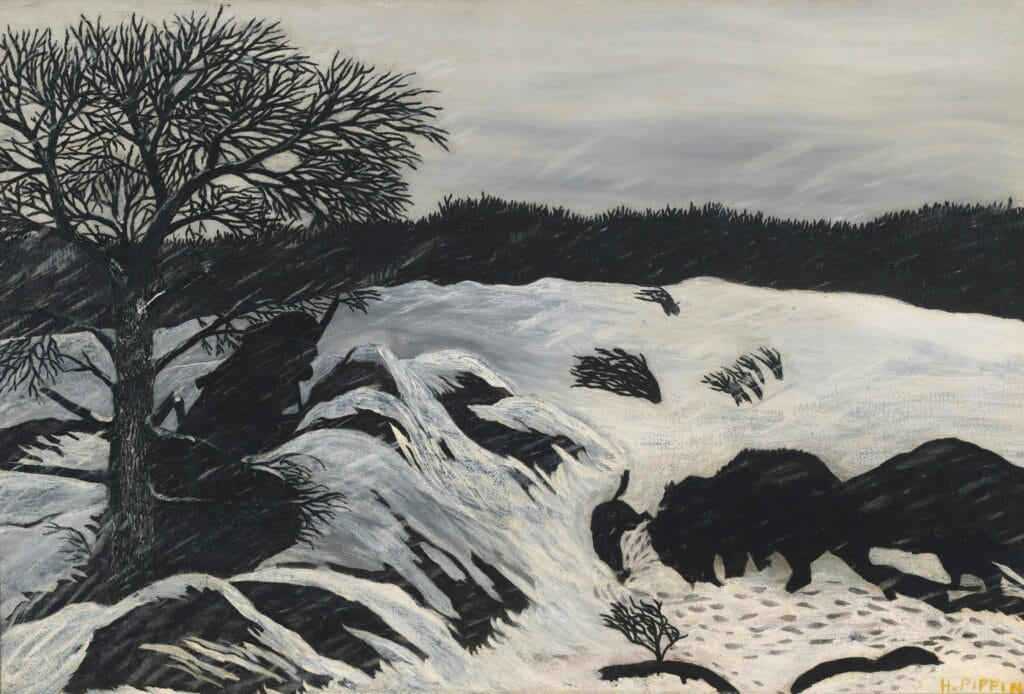
“Gatecrashers” is curated by the High’s Merrie and Dan Boone curator of folk and self-taught art, Katherine Jentleson, and is based on the book she authored of the same name, which was published in 2020.
“‘Gatecrashers’ — both the book and the exhibition — establish an origin story for how self-taught artists first succeeded within the mainstream art world,” said Jentleson. “Kane, Moses, Pippin and the other artists in the exhibition deserve to be reconsidered not only because of how their work intertwined with major cultural and social change of their day, but also because of how their gatecrashing set the stage for the vital role that self-taught artists still play in the 21st century, greatly diversifying our cultural canons across race, gender, class, ability and other important markers of identity that are all too often underrepresented.”
“Gatecrashers” will be organized in thematic sections that explore how these self-taught artists were embraced as examples of a uniquely American creative excellence and the role that their occupational histories played in advancing their reputations against the backdrop of Depression-era populism. The works on view also will demonstrate how alignments in style and subject matter led to exhibitions at major museums that integrated the artists’ work with that of their trained peers, foreshadowing how many museums today promote self-taught artists within their American and contemporary art displays.
In 1927, Kane succeeded in placing his oil-on-canvas painting “Scene From the Scottish Highlands” in the Carnegie Museum of Art’s contemporary art international thanks to the jaunty painting’s embodiment of the stilted realism of historical folk art, which was gaining popularity among artists and collectors in this era. Many of the self-taught artists who would go on to be celebrated in the subsequent decade were first-generation immigrants like Kane, whose painting shows the Scottish American heritage festivals he attended in Pittsburgh. Brooklyn-based Jewish artists from Eastern Europe such as Morris Hirshfield and Israel Litwak also found audiences for their work, demonstrating how the art world slowly became more inclusive of who qualified as “American.”
As African American artists struggled to find recognition in the largely segregated national arts scene, Pippin achieved great success with paintings like “Cabin in the Cotton” (ca. 1931-1937), a work set in the American South. In many of his works, including “Outpost Raid: Champagne Sector” (1931), Pippin recorded his experiences fighting in the trenches of World War I, where he was shot by a German sniper, resulting in an arm injury that he rehabilitated by painting. He lived in the part of Pennsylvania associated with the Brandywine River artists such as Newell Convers Wyeth, an early advocate of his work, and became a fixture in exhibitions of self-taught artists and in the first major surveys of African American artists that emerged by the end of the 1930s.
In addition to expanding definitions of American art in terms of both race and ethnicity, self-taught artists such as Josephine Joy and “Grandma” Moses also broke through the art world’s gender glass ceiling. Joy became the first woman painter to have a solo exhibition at the Museum of Modern Art when her paintings of flowers, trees and sites near her home in San Diego were shown there in 1942. By that time, Moses was on a trajectory to stardom that was unprecedented for any artist in the United States — and arguably remains so — after her paintings were discovered hanging in the window of a New York pharmacist in 1938. Her pastoral scenes of life in New England became a potent force as the United States entered the Cold War era. Her paintings even traveled abroad to promote goodwill toward America, much to the chagrin of American critics who were more interested in promoting abstract painting abroad.
“As self-taught artists become increasingly visible within today’s art world, this exhibition takes audiences back to the moment when it all began,” Jentleson said.
“Gatecrashers” will be presented in the Special Exhibition Galleries on the Second Level of the Stent Family Wing.
Exhibition Publication
“Gatecrashers: The Rise of the Self-Taught Artist in America,” is accompanied by Jentleson’s book of the same name, published by the University of California Press.
Related
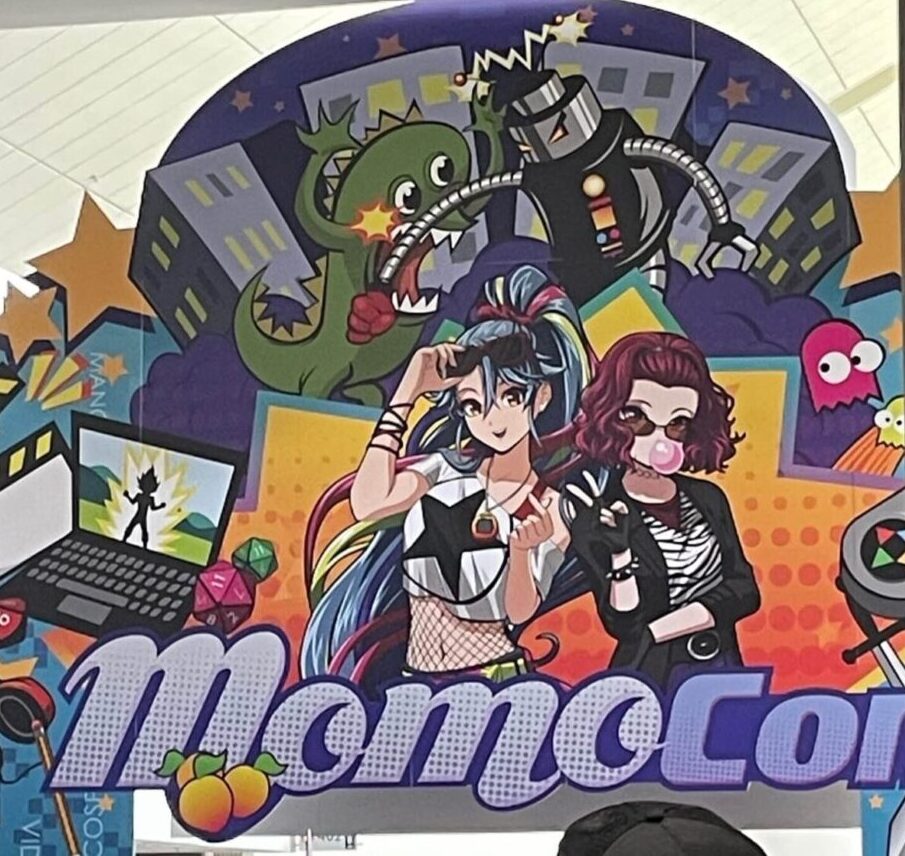
Annual multi-genre convention celebrating Japanese anime, American animation, comics and gaming sets new record with 59,222 attendees
— Article updated May 29, 2025
Atlanta welcomed nearly 60,000 fans of cosplay, comics, gaming, anime and music over the four-day Memorial Day weekend — all meeting up at the Georgia World Congress Center to celebrate MomoCon 2025 and its 20th year in the city.
One of the fastest growing, all-ages conventions in the country, this year’s numbers topped the 56,000 guests that attended in 2024, and was estimated by the Atlanta Convention & Visitors Bureau to have a $42.2 million impact on the metro area.
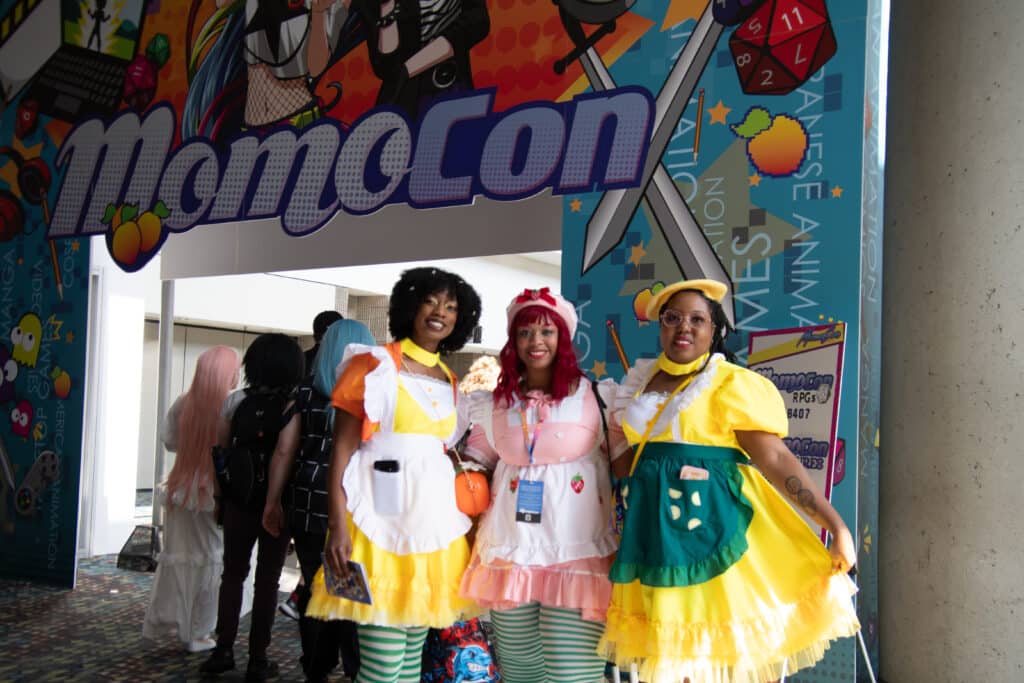
Equally important, the buzzing enthusiasm and pure joy of the weekend, from both attendees and featured guests, was unmatched. Everyone seemed to be having an incredible time. And plans are already in the works for an even more impressive — and expanded — MomoCon experience in 2026.
Organizers say they are expanding into both Hall A and Hall B next year, increasing the total space to a massive 1,045,178 square feet for exhibits and gaming. The team is already hard at work planning amazing new guests and activities for MomoCon’s 21st year.
Registration for next year’s event is already open, with early-bird discounts for fans who want to lock their passes in early.
Giving back to the community
In addition to the money brought into the city and to the convention itself, MomoCon chooses a charity each year in which to support with donations. Funds are raised through sales of specialty merchandise and custom events that have donation elements built in.
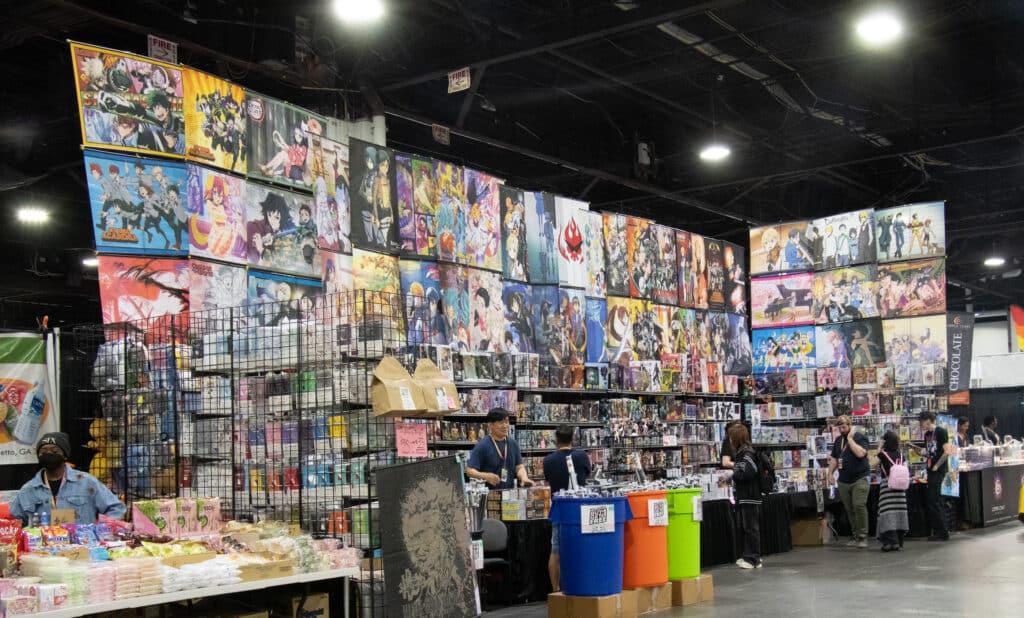
The 2025 official charity was the Johnson STEM Activity Center. MomoCon raised more than $5,000 for the center and contributed an additional $7,500 in matching funds, bringing the total donation to $12,500. MomoCon organizers also worked with 11 Atlanta-area, youth-serving nonprofits to give back by bringing more than 900 kids in need to the convention.
Nonprofits receiving tickets this year included Scouting America, Horizons Atlanta, ReImagine ATL, the New Media Education Foundation of Georgia, Purpose Possible, Lekotek, Focus, Boys & Girls Clubs of Metro Atlanta, Big Brothers Big Sisters of Atlanta, Wellroot Family Services and the YMCA.
Fan-favorite comic book artists
Comic book artists (and original members of the former Atlanta-based Gaijin Studios), Cully Hamner and Brian Stelfreeze made their first appearances at MomoCon this year, invited to attend and show off their work in the Artist Alley.
Fans lined up to meet them, along with fellow award-winning artist and longtime friend, Wade von Grawbadger, to get photos, autographs and artwork and spend a few minutes chatting with the guys.
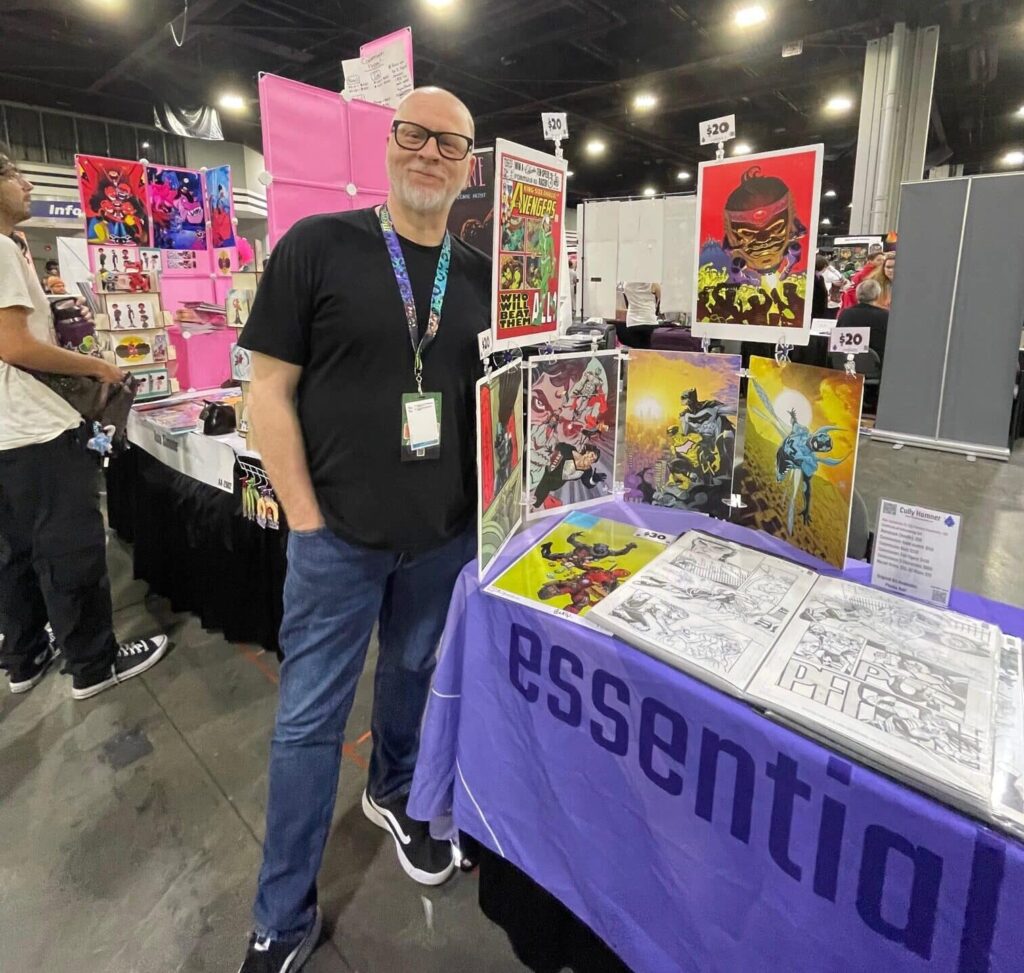
Hamner talked briefly about an upcoming project, “Ruby Actual” that he’s doing with Greg Rucka. “Not sure when it will come out,” he said, “But we’re hoping first quarter 2026.”
In the meantime, comic fans can continue to enjoy his previous work — the acclaimed, creator-owned RED (which was adapted into two films), the current Blue Beetle (also adapted to film) and all of the other work he’s done for DC, Marvel and other publishers over the last 30 years.
They can also look forward to his return to MomoCon in the future if schedules work out.
“This has been a lot of fun,” Hamner said on Sunday, the last day of the convention. “I’d love to come back if they invite me again.”
Stelfreeze agreed. “I enjoyed [MomoCon],” he said. “I really liked seeing the younger audience.”
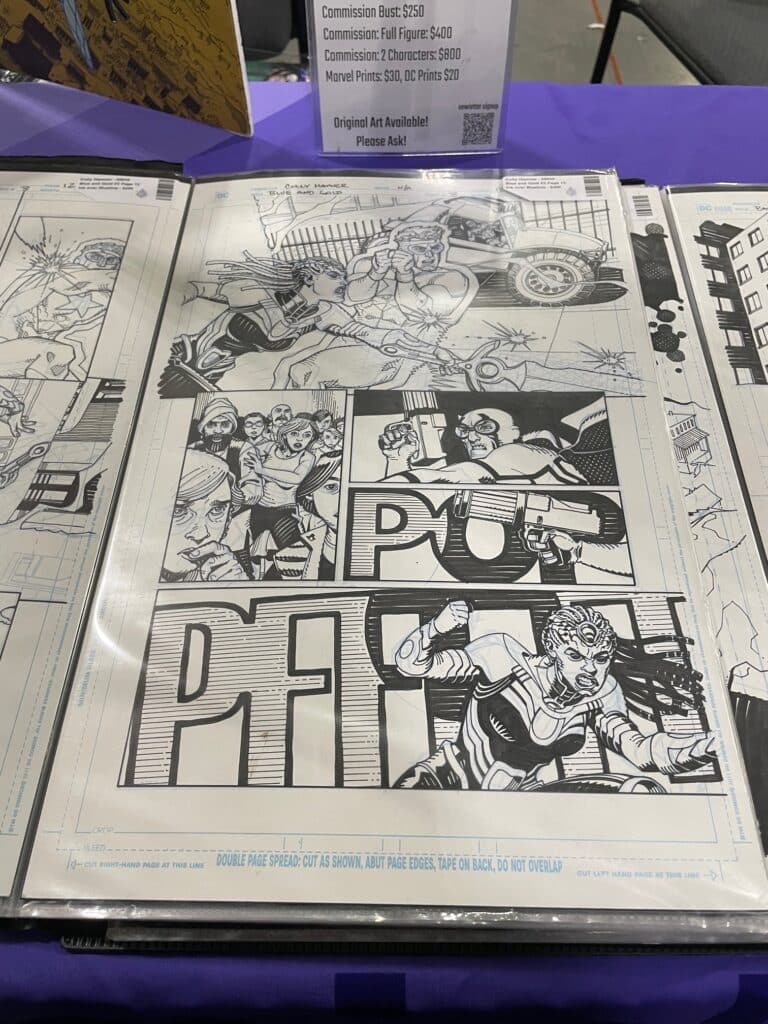
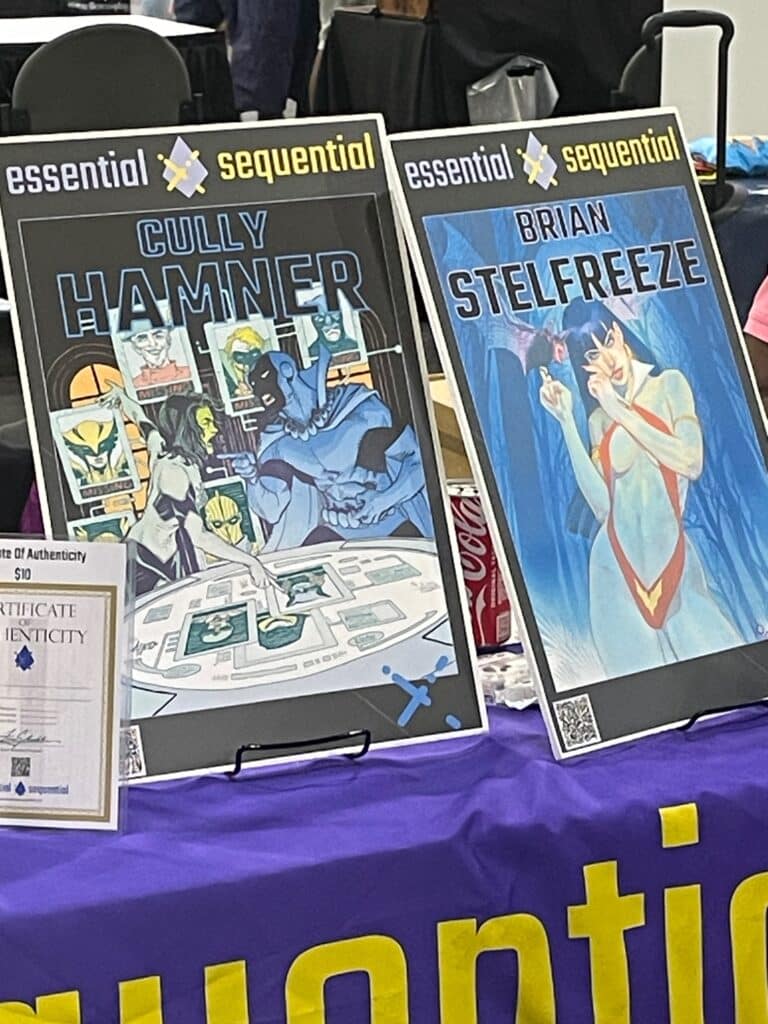
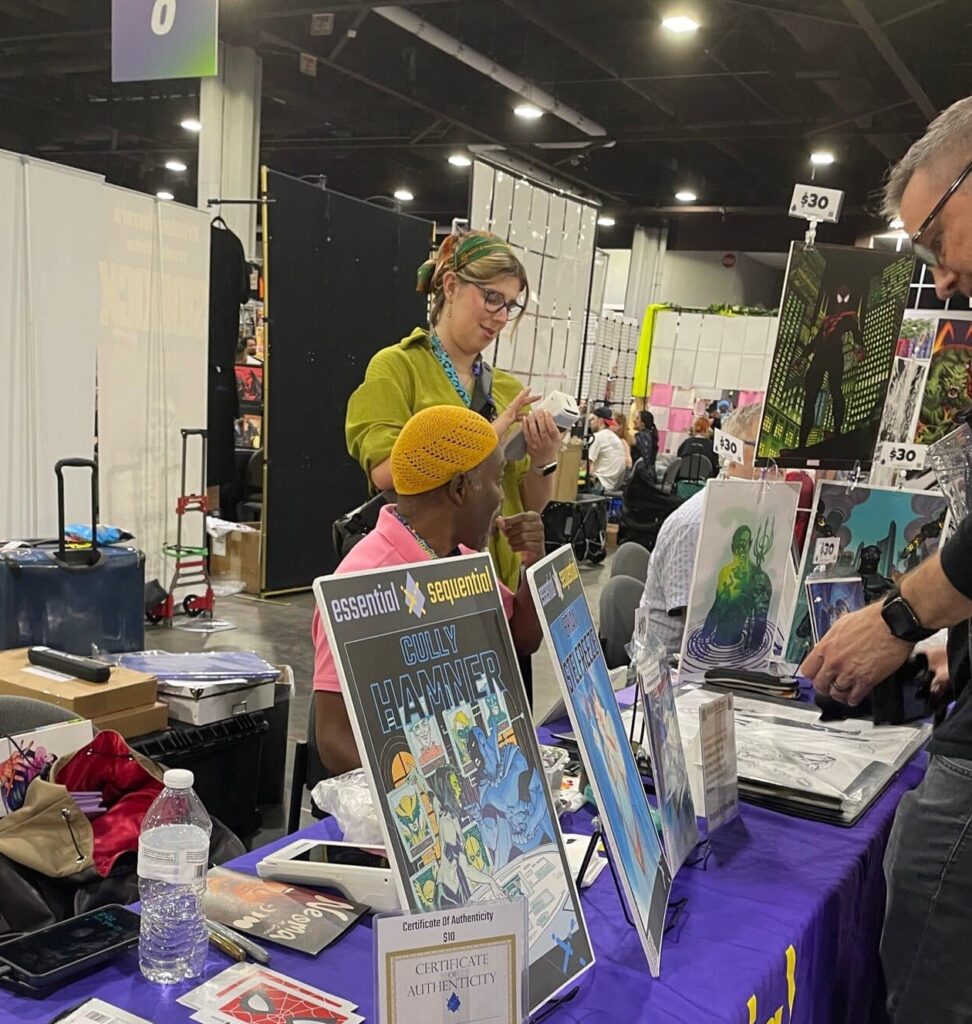
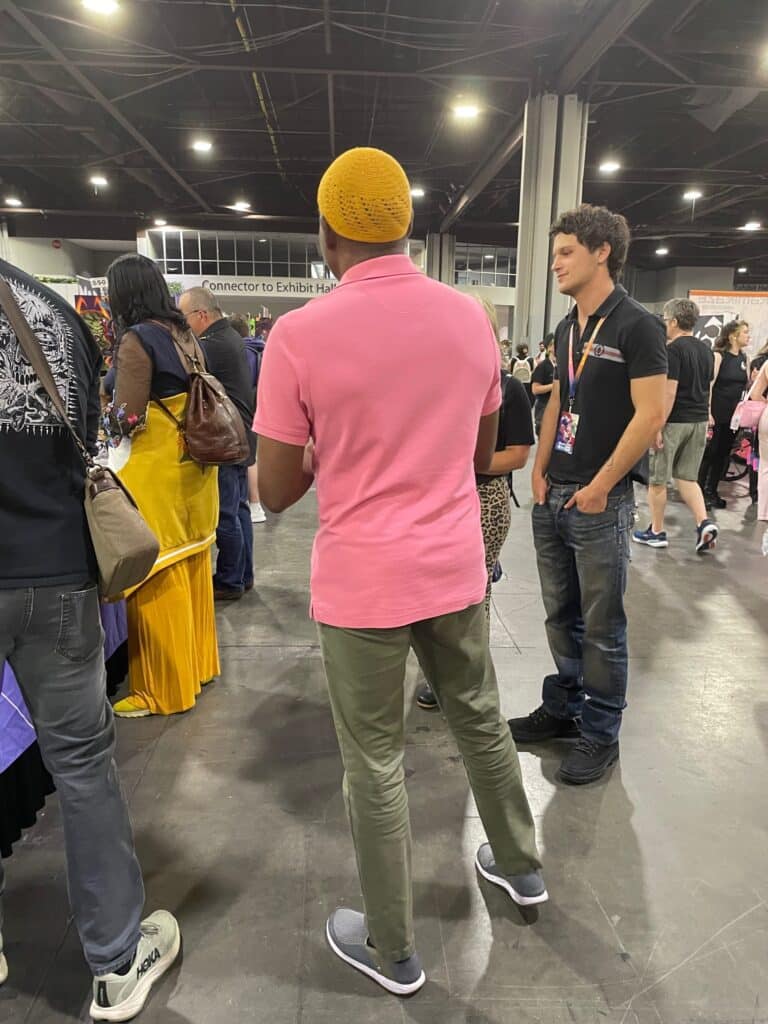
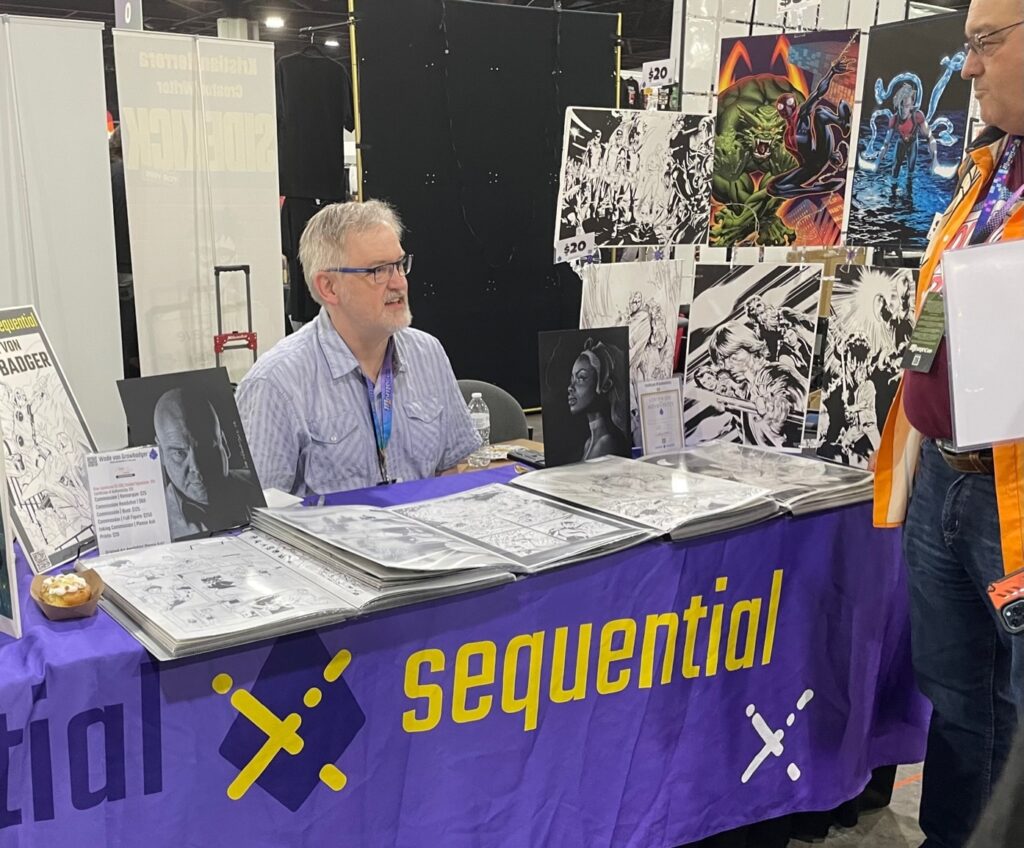
That definitely seemed true on Sunday, as the crowds had thinned out some and Stelfreeze had more time to hang out and talk with people who stopped by the Essential Sequential booth. With some fans, he spent ten minutes or more discussing art, comics and other topics, and even came out from behind the table at times to meet people and say hi to old friends.
Featured guests
Other featured guests also drew long lines of fans who were eager to meet their favorite creators.
Darryl McDaniels (from RunDMC and now a comic book and children’s book author), Greg Burnham (Norcross-based comic book writer known for his indie comic hits), Reed Shannon and Mick Wingert (voice actors and stars of Netflix’s “Arcane”), Ryō Horikawa (Japanese voice of Vegeta in “Dragon Ball Z”), veteran voice actor and producer, Chris Sabat, and online personalities such as Damien Haas were just a few of the standouts.
In fact, as the convention was winding down on Sunday afternoon, Haas’ fan line was still so long, the crowd filled multiple rows of the cordoned-off autograph area, both inside and outside of his designated line.
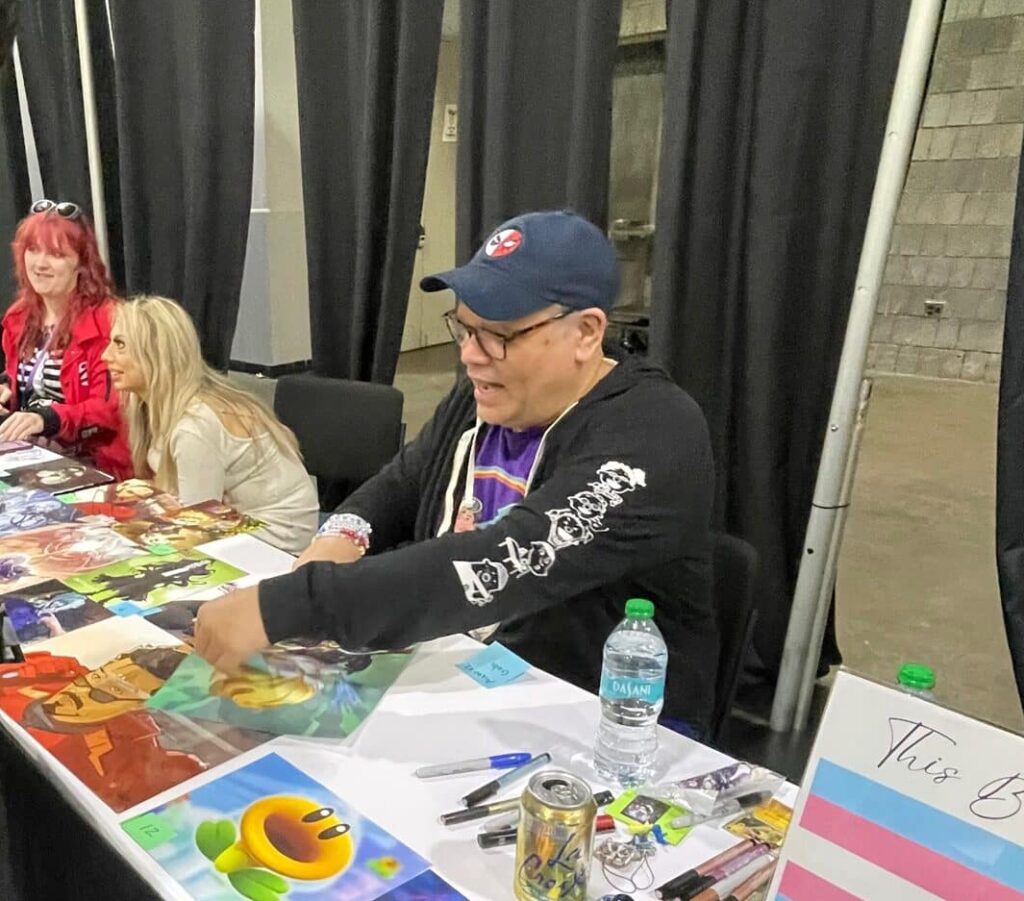
A full list of 2025 celebrity guests can be found here.
New for 2025
While most of the fun features of MomoCon 2025 were returning favorites — Artist Alley, Exhibitor’s Hall, panels, movie screenings and the cosplay showcase —convention organizers kept things fresh with a new theme (‘90s Retro) and a few new highlights, including a skating rink, an expanded online gaming area and the return of the“Bring Your Own Computer” space.
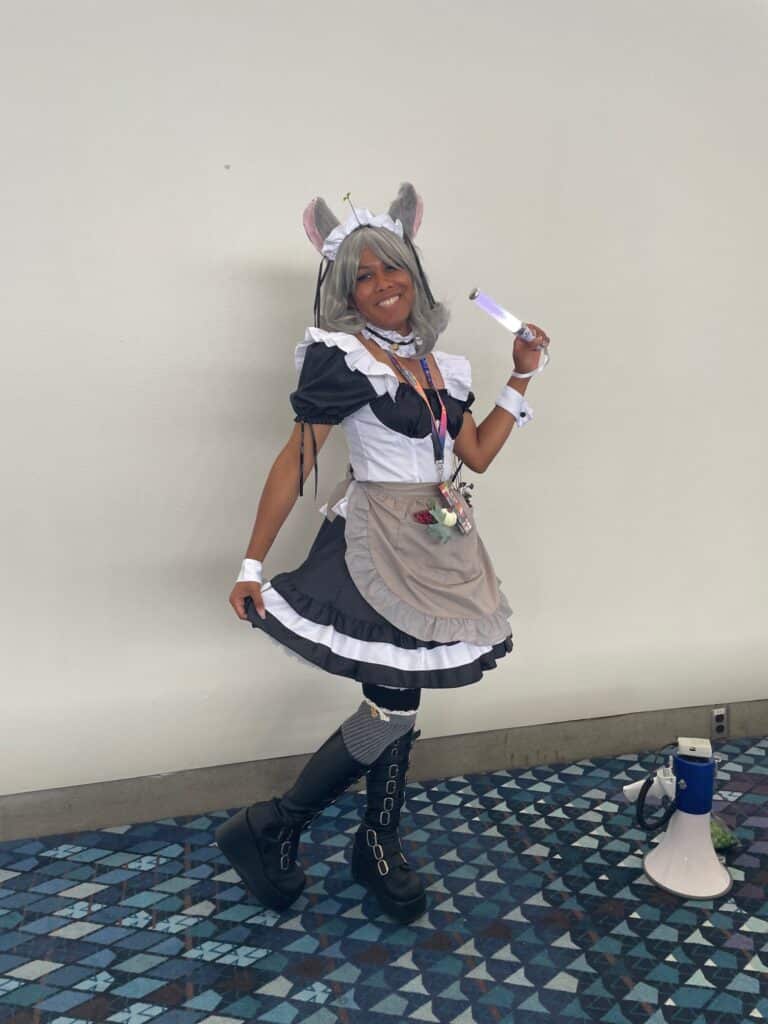
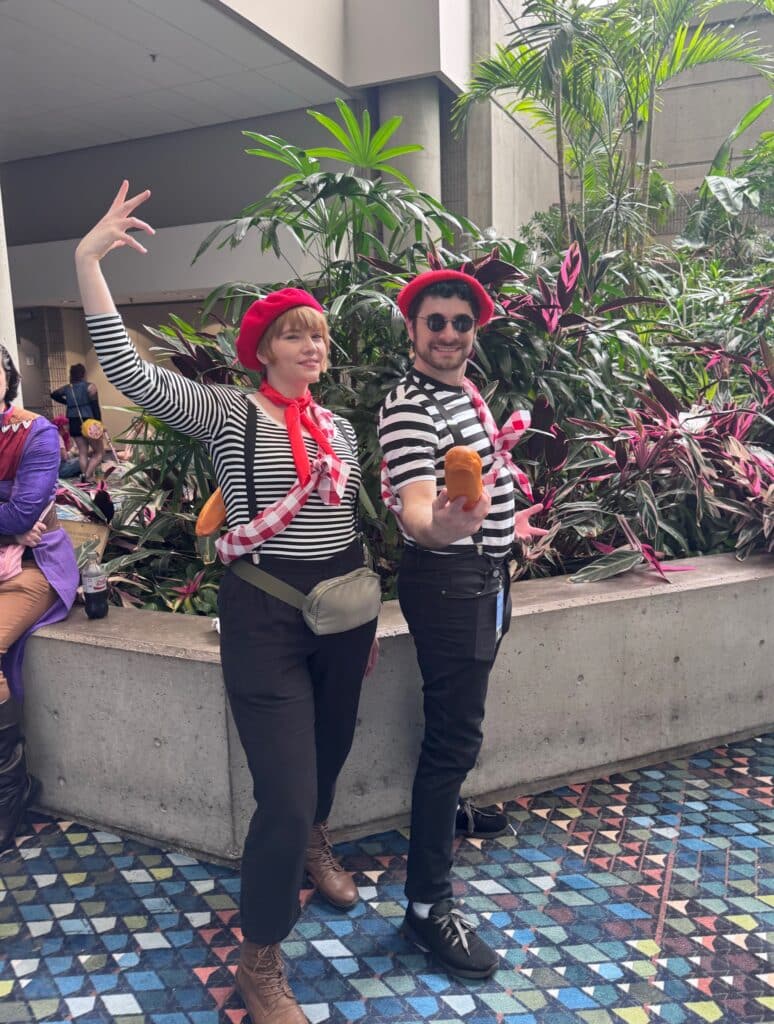
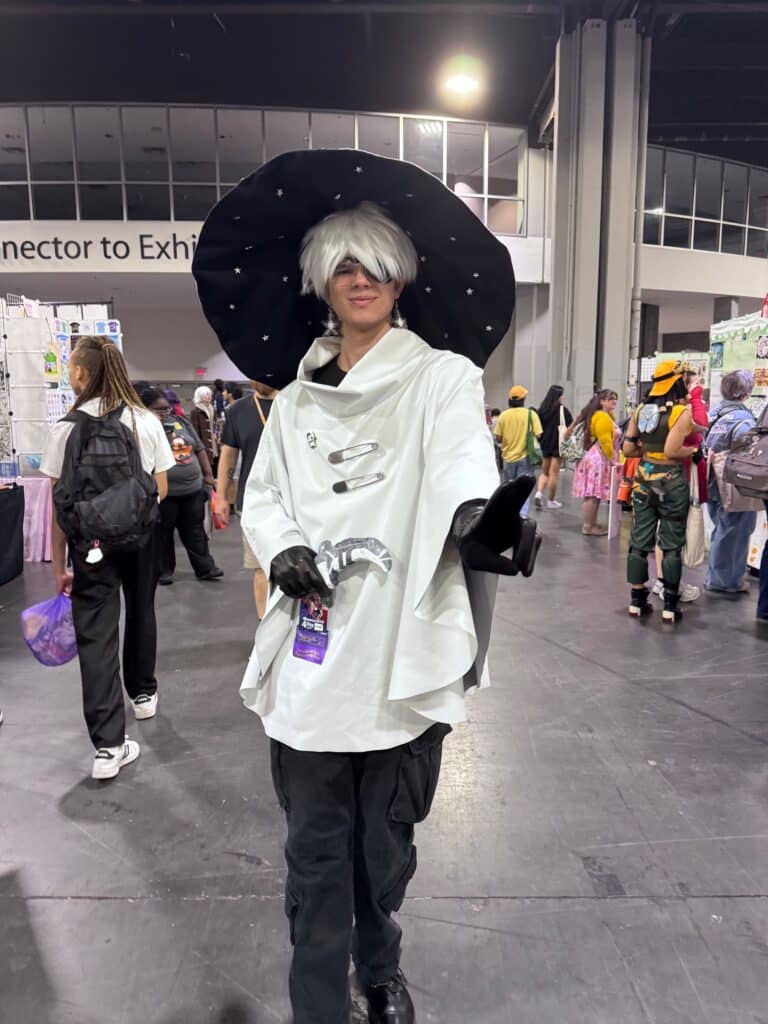
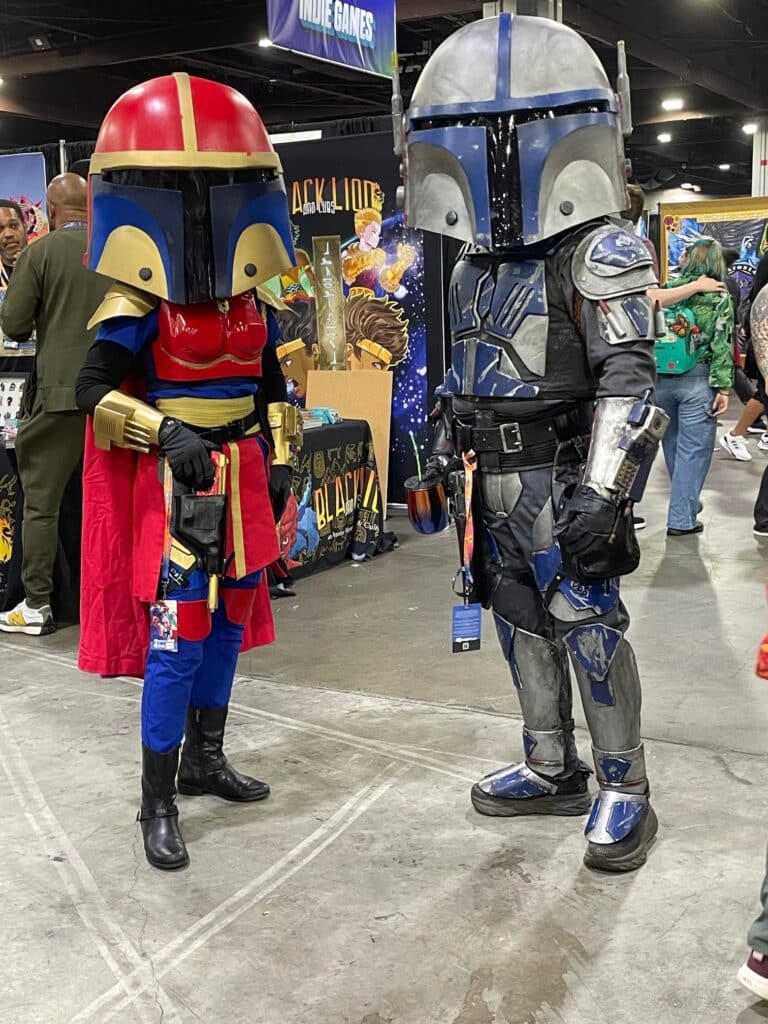
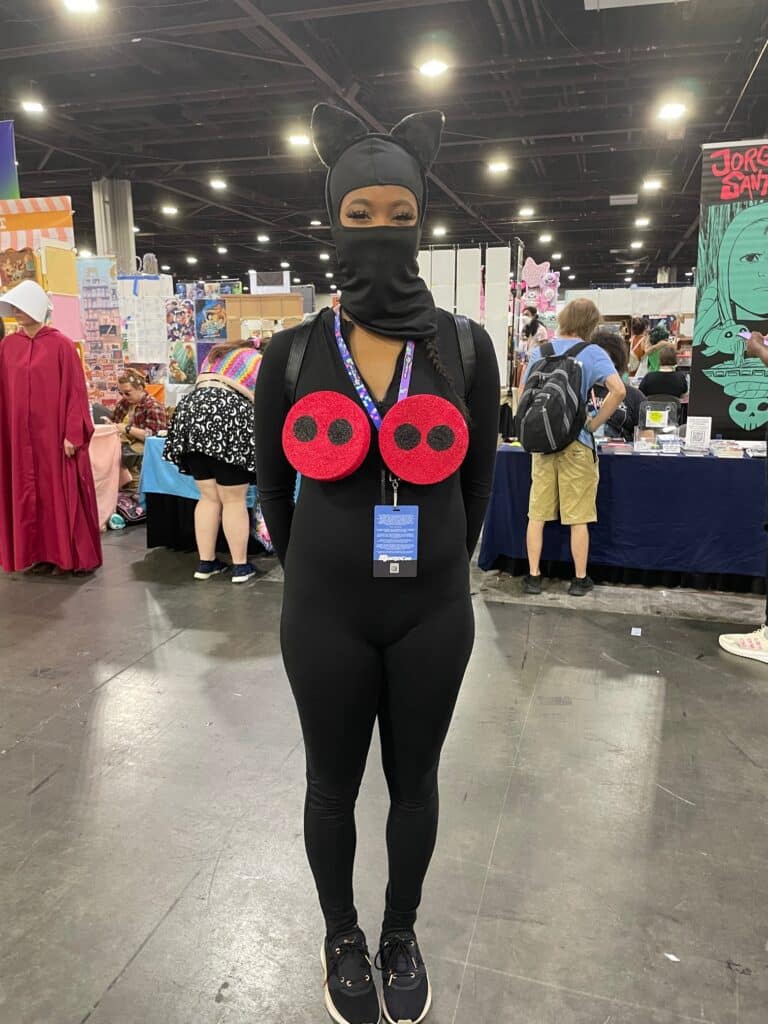
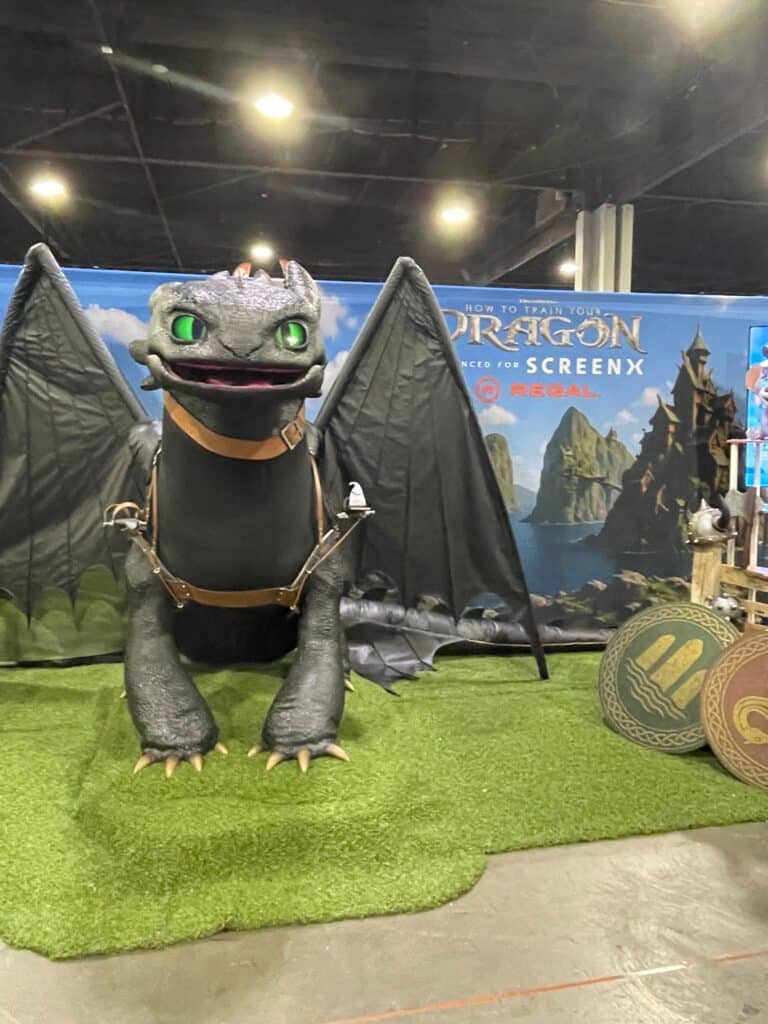
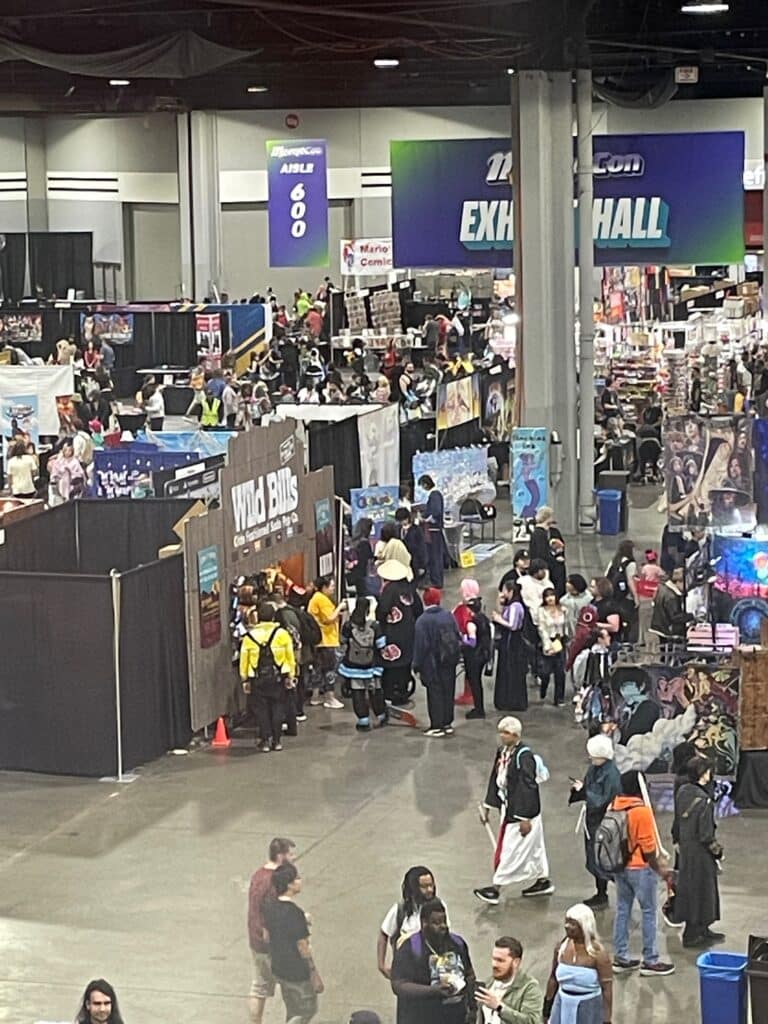
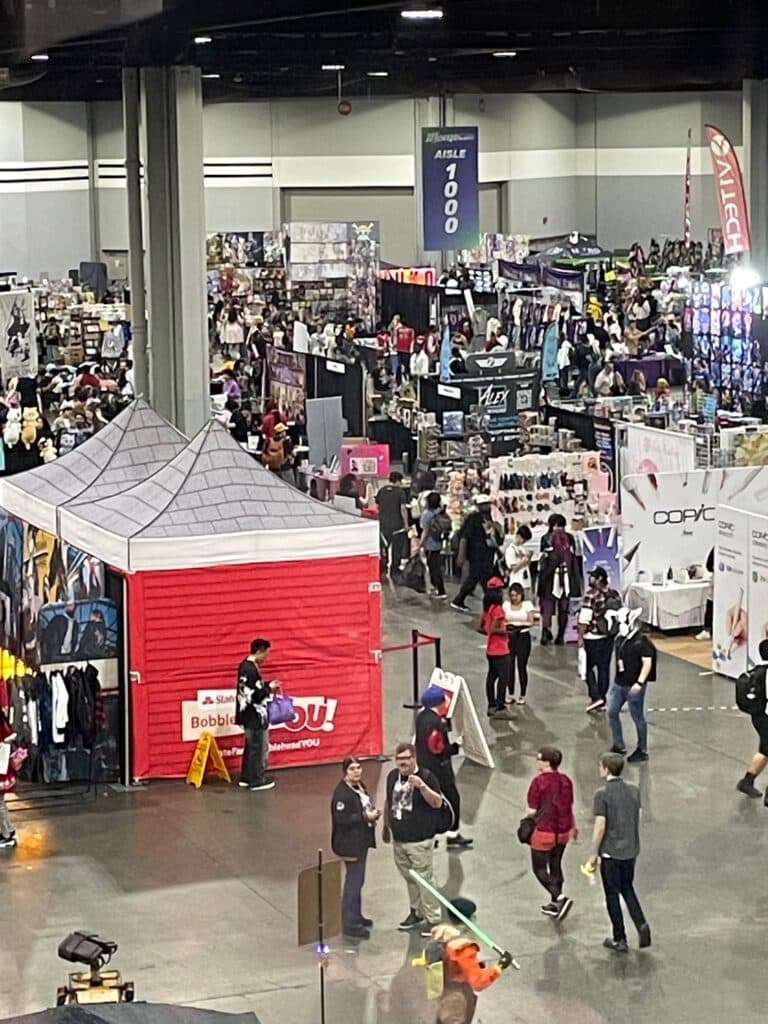
Workshops on everything from miniature painting and D&D to Gunpla modeling, as well as live performances and a massive vendor area and fan car showcase rounded out the exciting weekend.
Though tired from a whirlwind weekend of geek culture camaraderie and large (but super friendly) crowds, we can’t wait to see what MomoCon has in store for 2026.
For more about MomoCon, visit momocon.com.
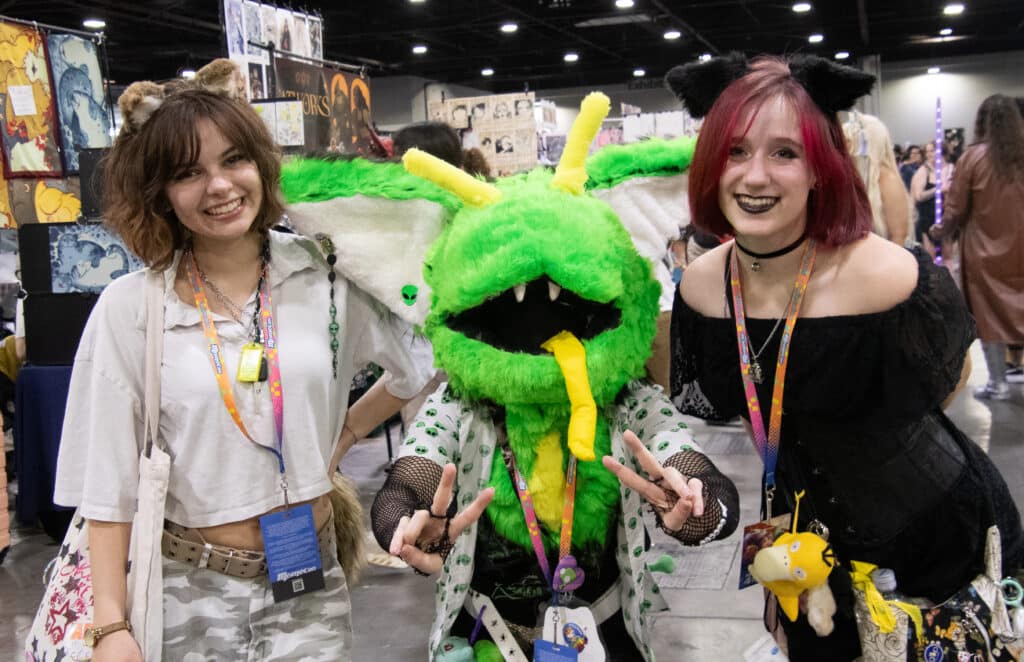
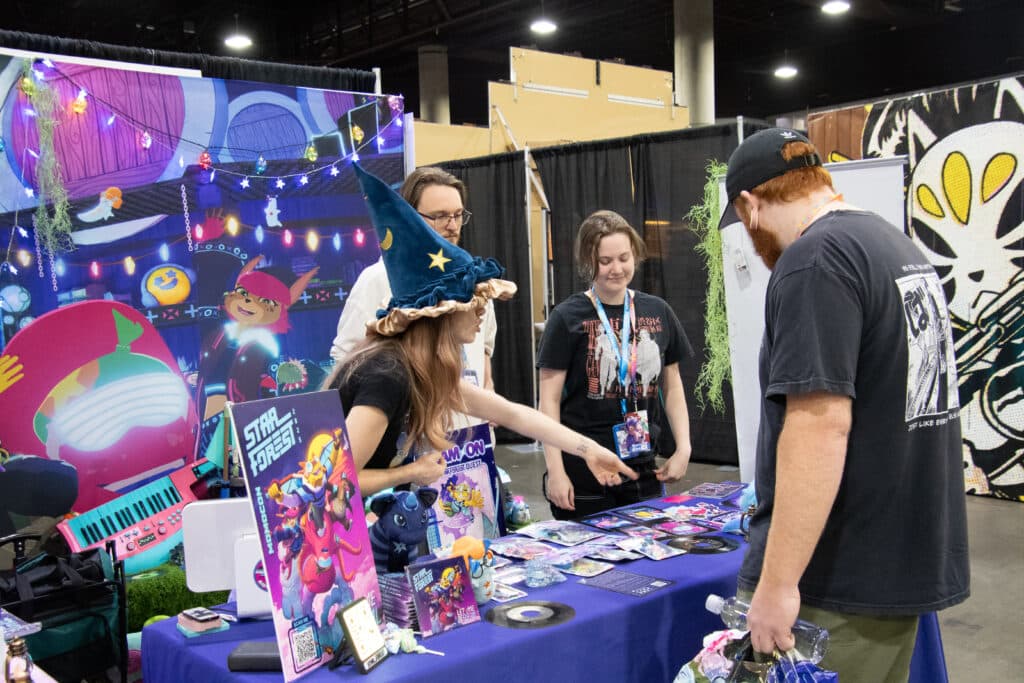
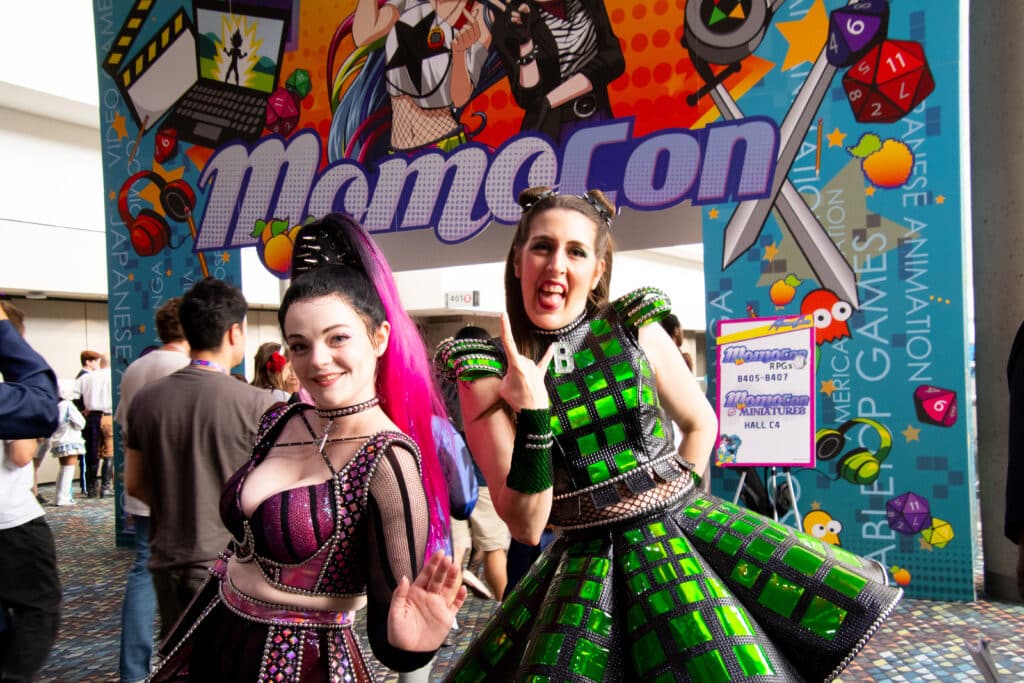
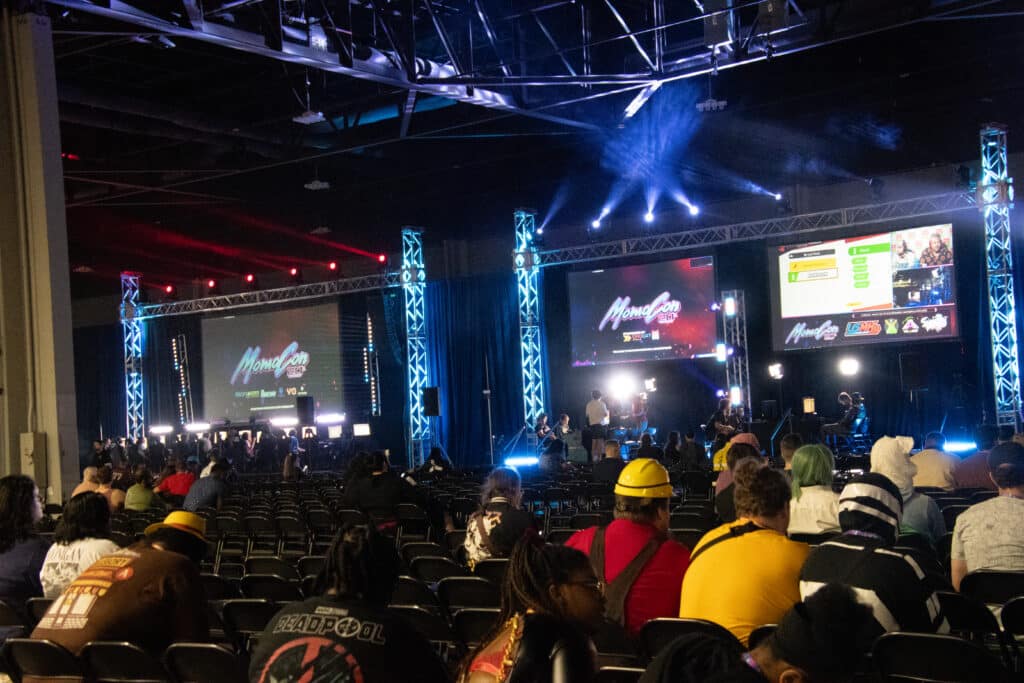
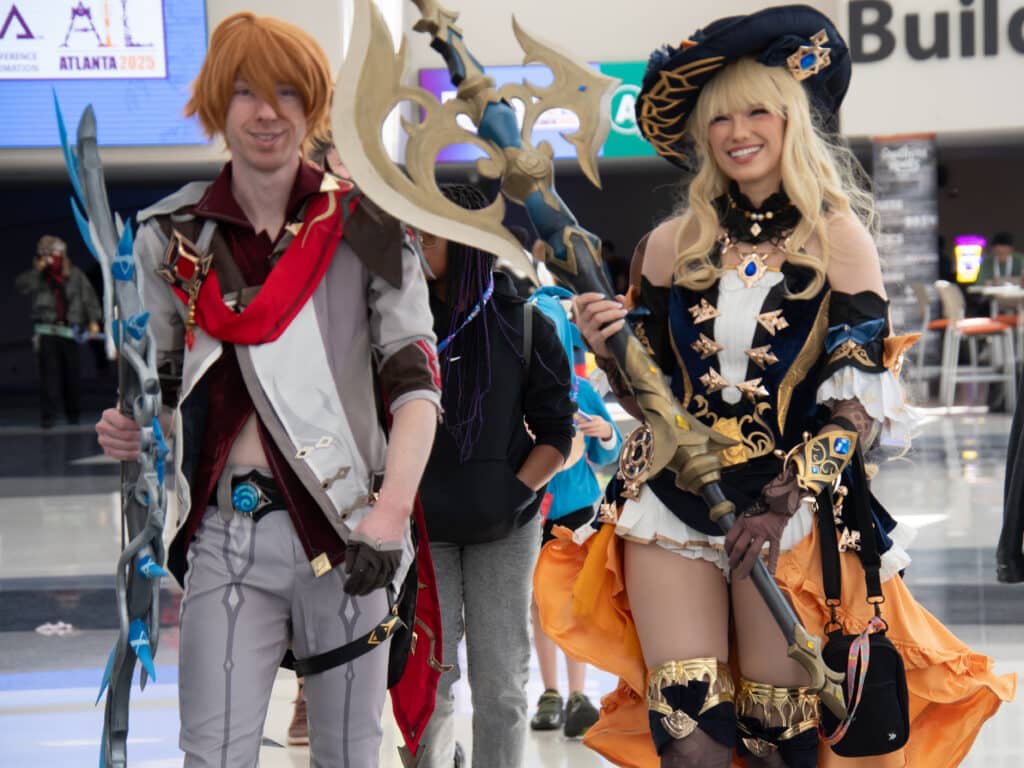
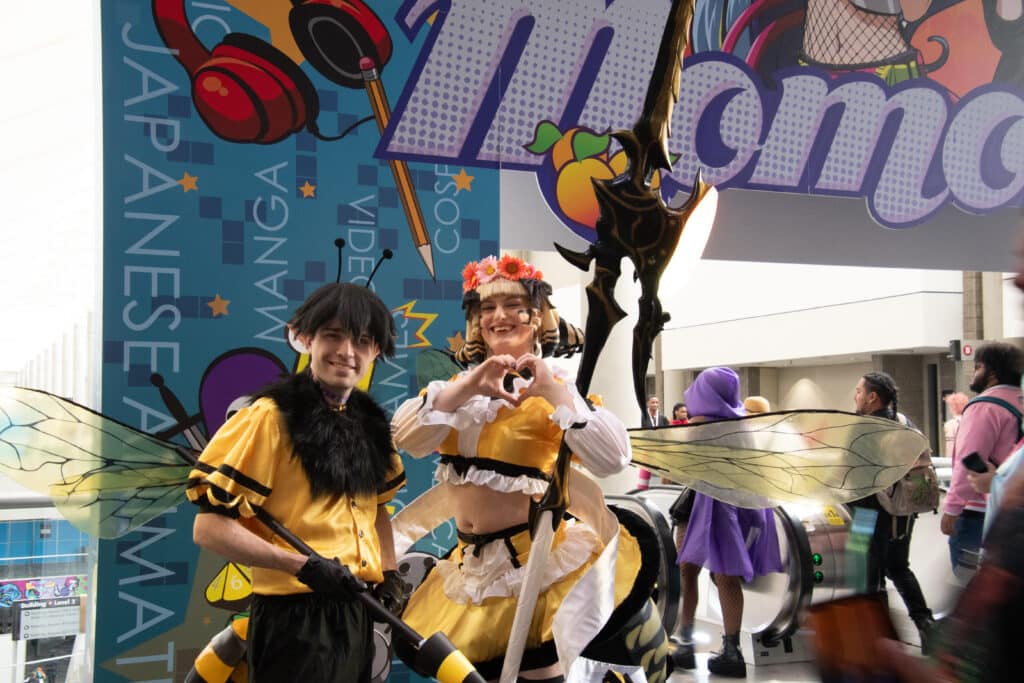
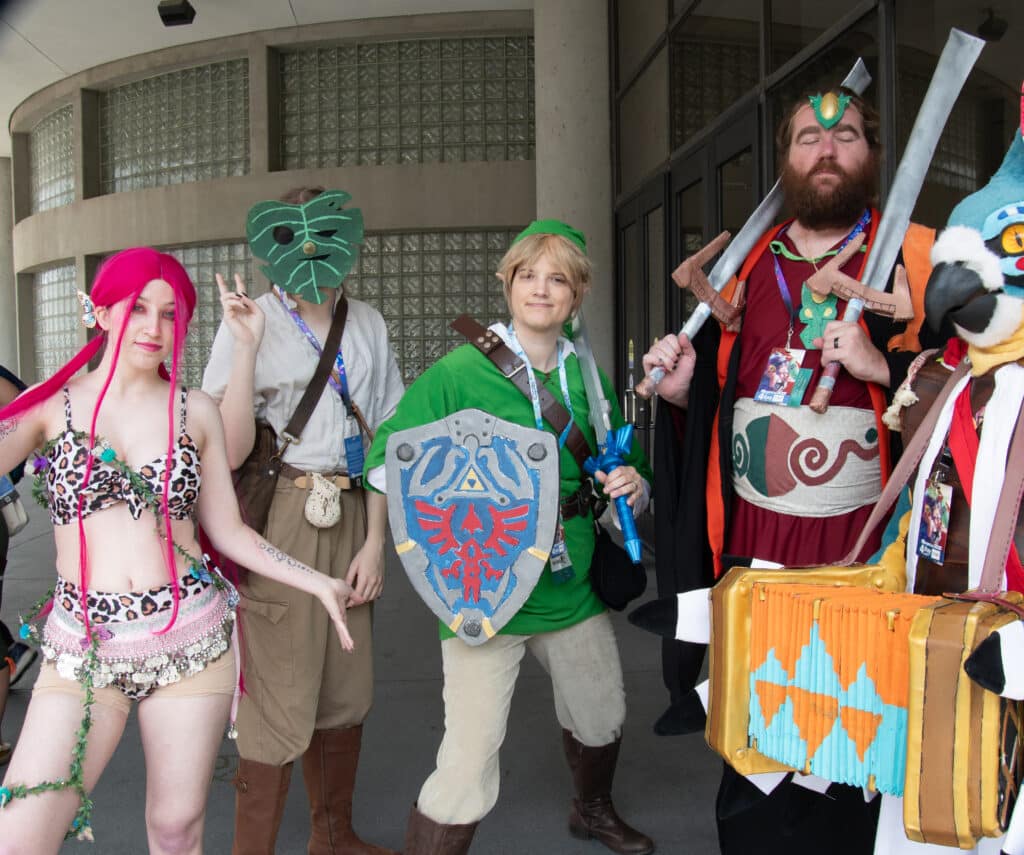
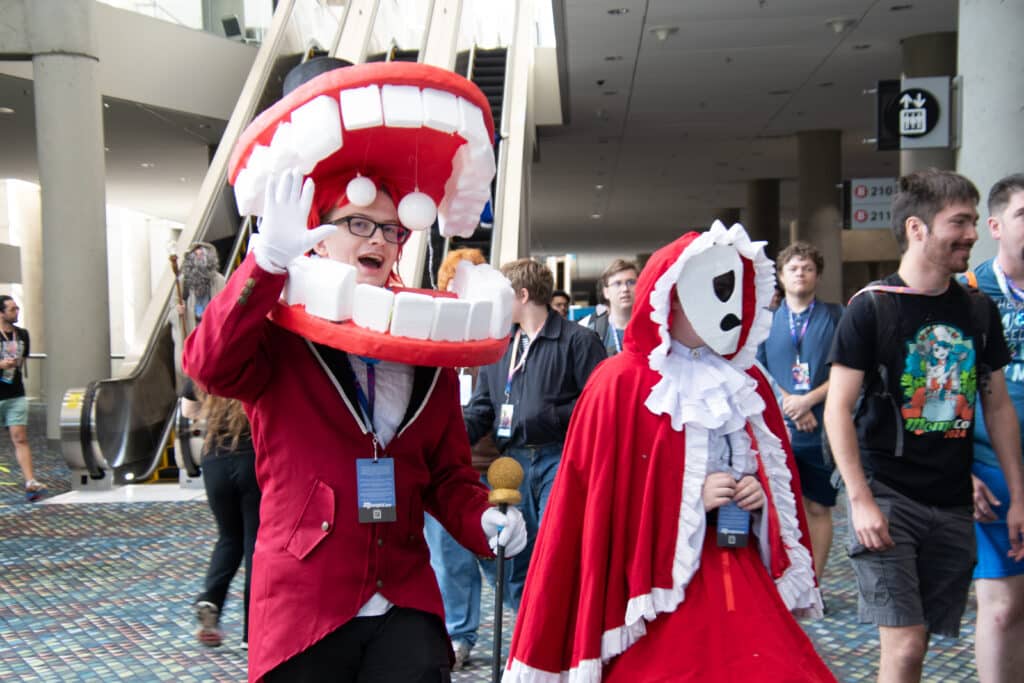
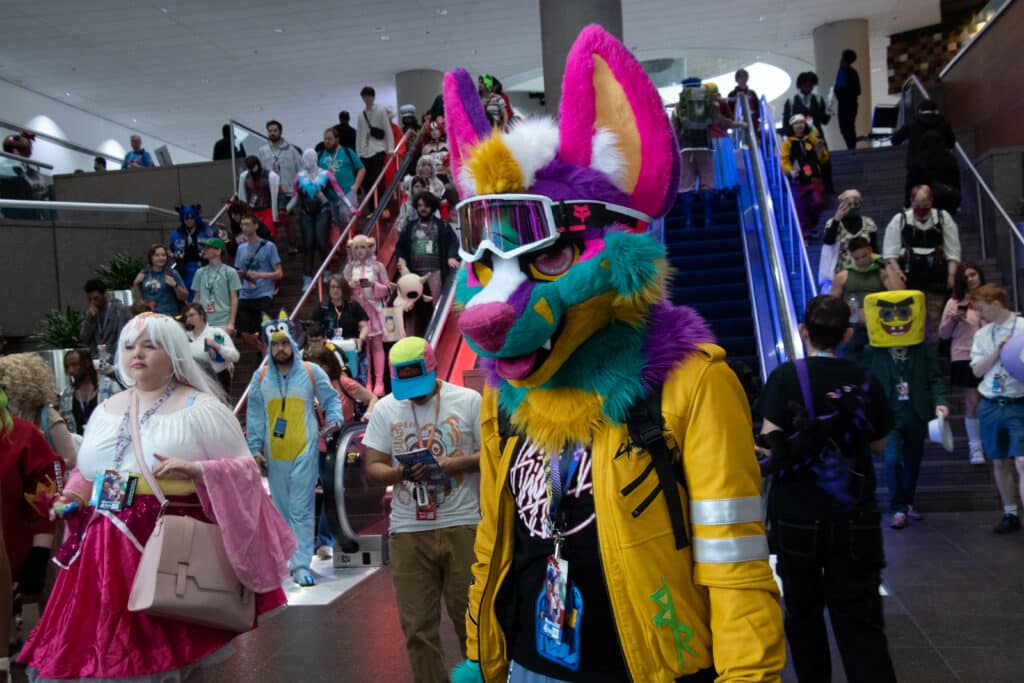
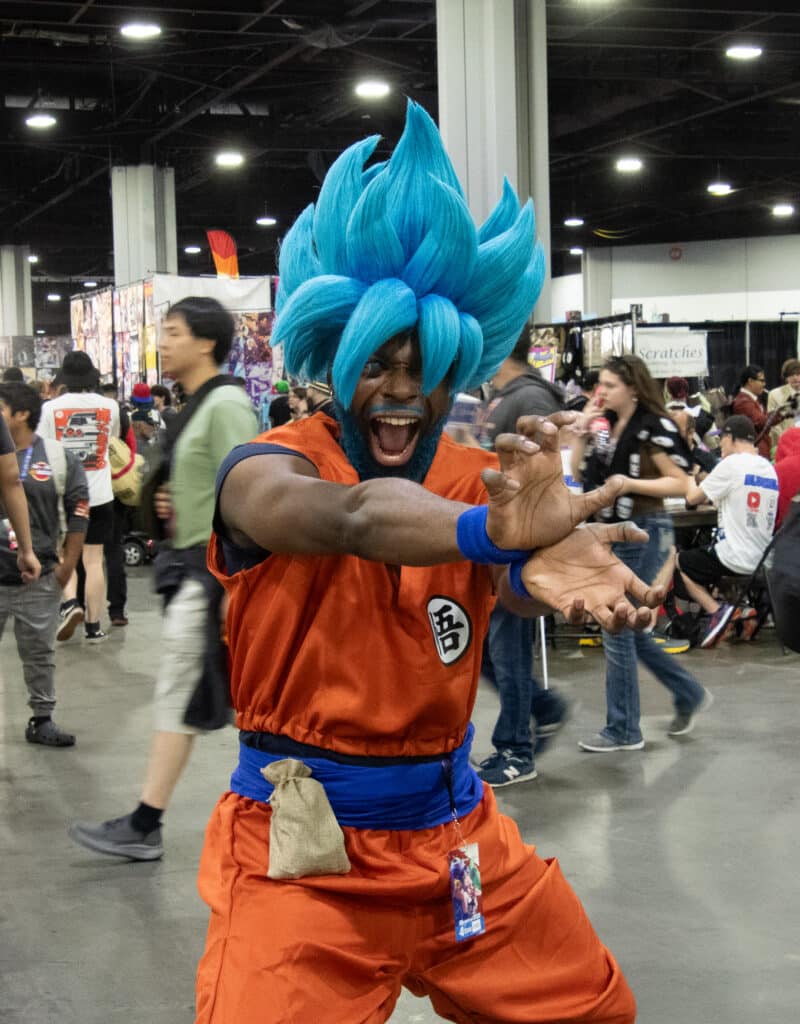
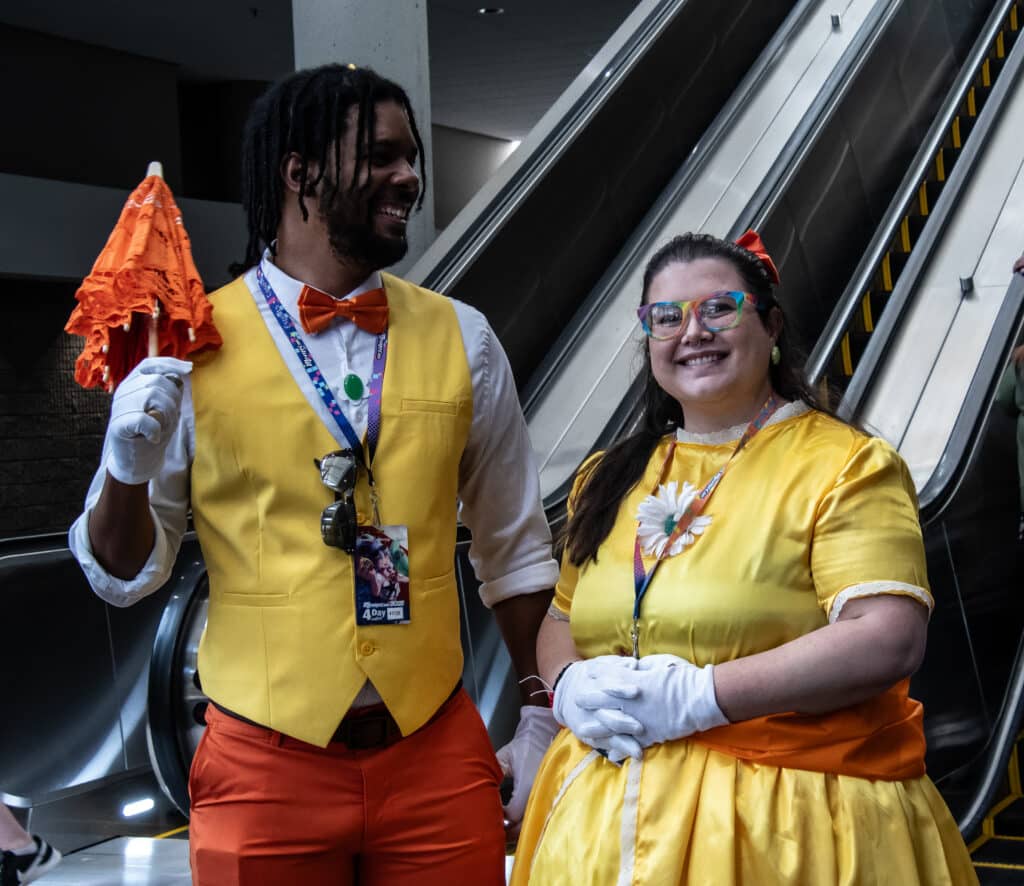
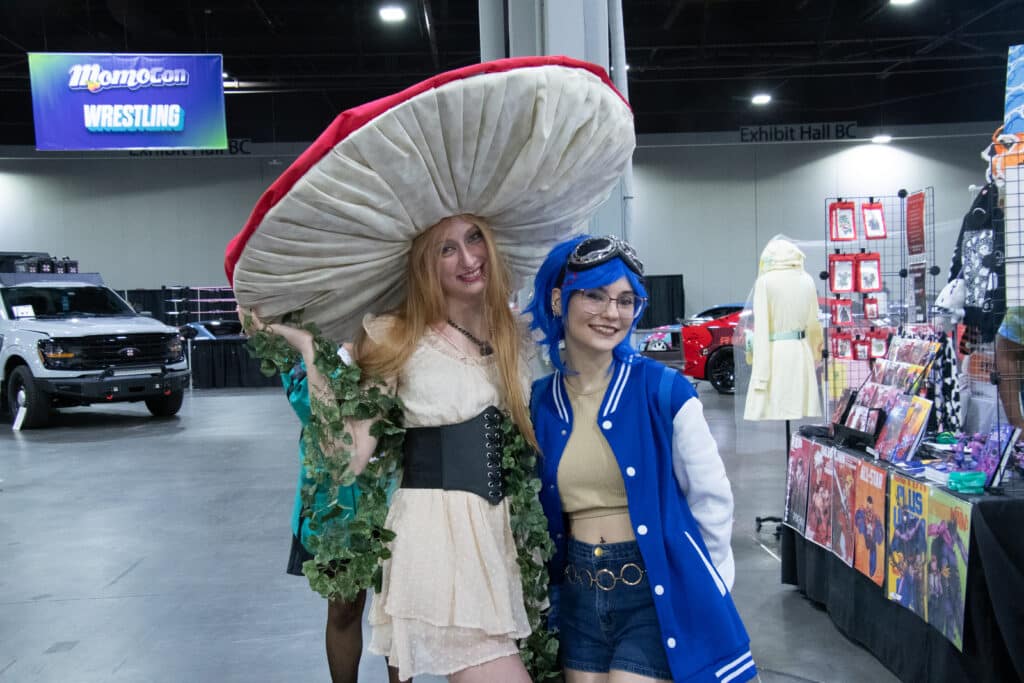
More moments from 2025; photos courtesy of MomoCon
Related
Around Atlanta
MomoCon 2025 to bring 60,000 Fans to Atlanta for a Weekend of Cosplay, Animation, Gaming and Music
Published
2 weeks agoon
May 16, 2025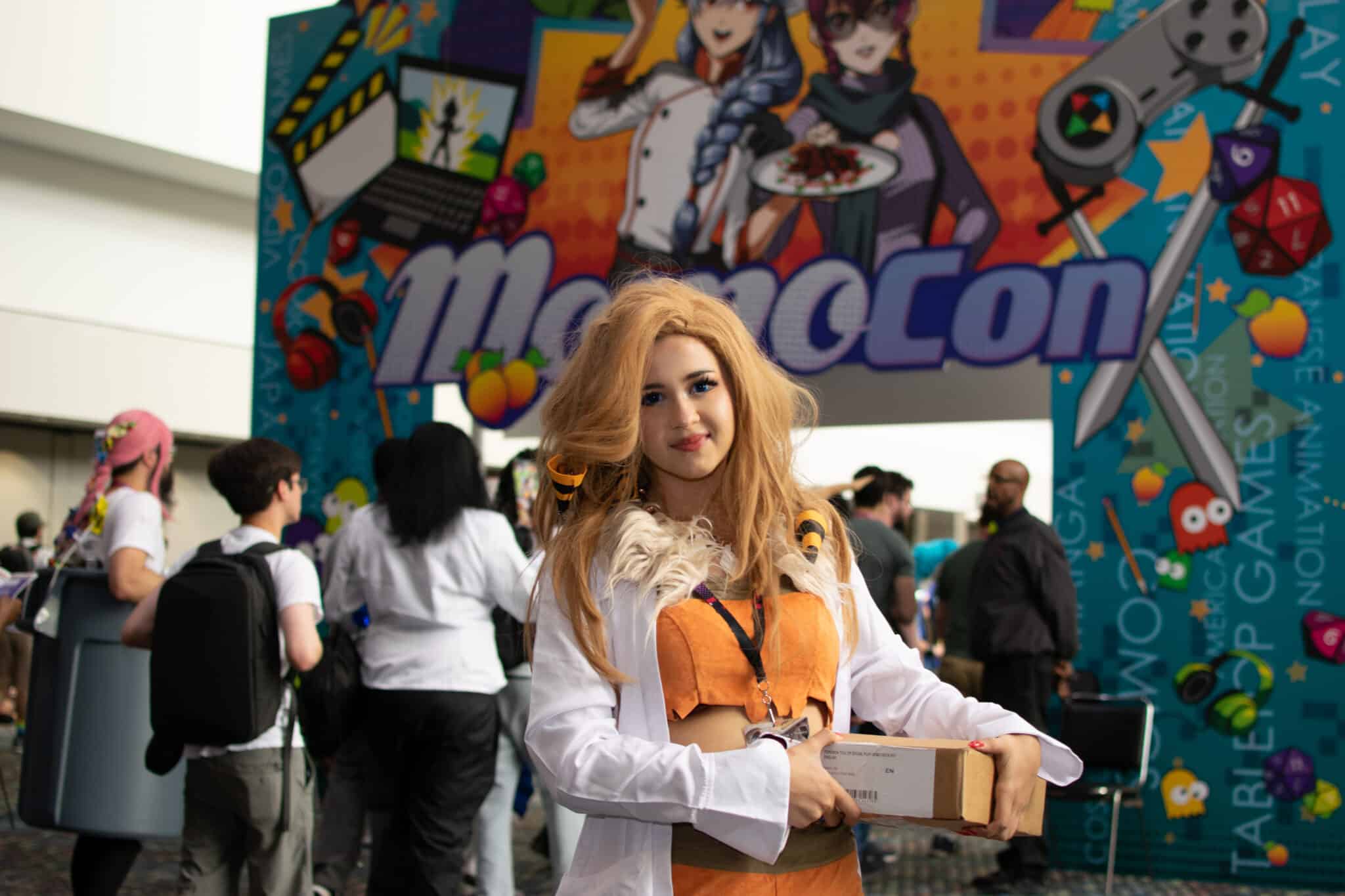
This year’s event is expected to have an economic impact of $42.4 million for the city.
MomoCon, the annual multi-genre, “geek culture” convention celebrating all things cosplay, comics, gaming, anime and music, is back for another exciting weekend at the Georgia World Congress Center, May 22–25 — marking its 20th anniversary in Atlanta.
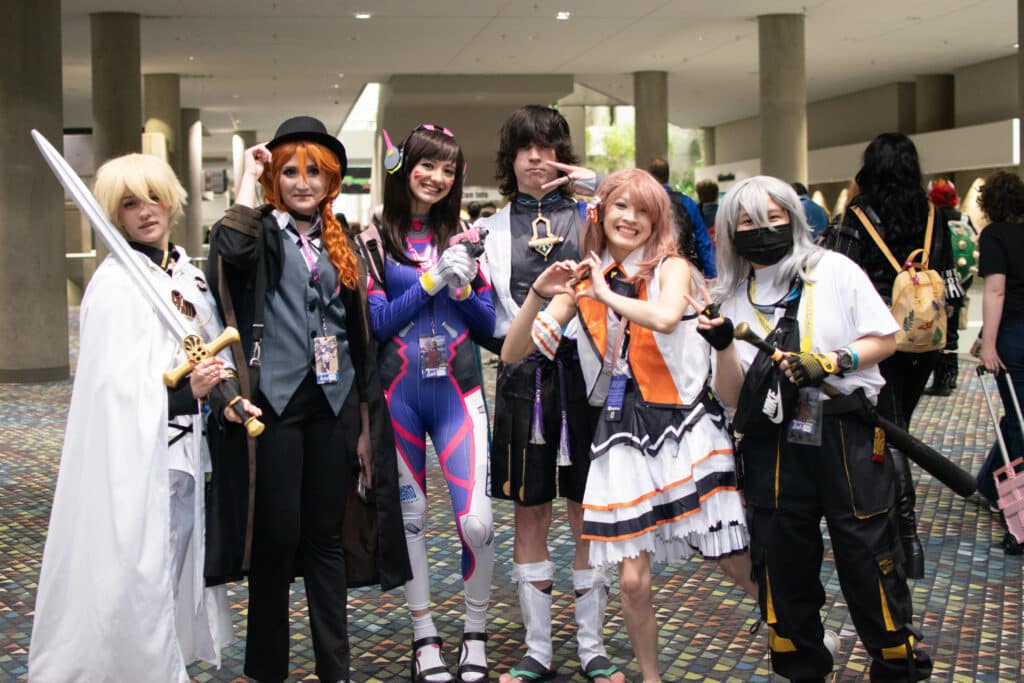
One of the fastest growing, all-ages conventions in the country, MomoCon welcomed 56,000 guests in 2024. This year, more than 60,000 fans of Japanese anime, American animation, comics and gaming (video games, esports, tabletop, LARP) — from across the U.S. and around the world — are expected to show up and celebrate their passion.
According to the Atlanta Convention & Visitor’s Bureau, the four-day event is expected to have an economic impact of $42.2 million in metro Atlanta.
2025 highlights
New this year: The theme for MomoCon 2025 is “90s Retro.” Attendees will find a roller skating rink, expanded arcade and online gaming area and a return of the “Bring Your Own Computer” (BYOC) section.
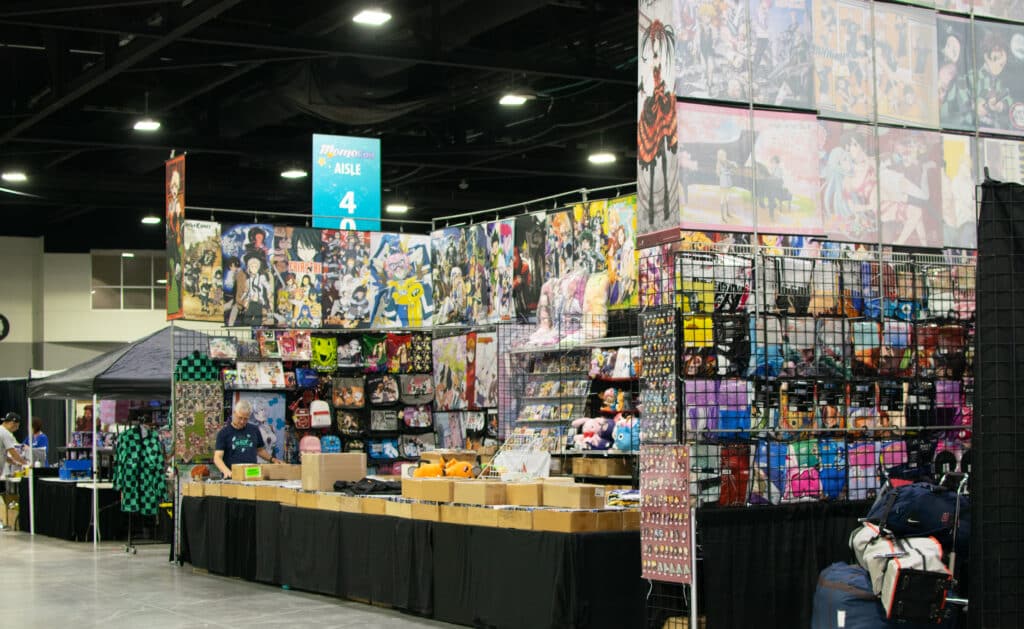
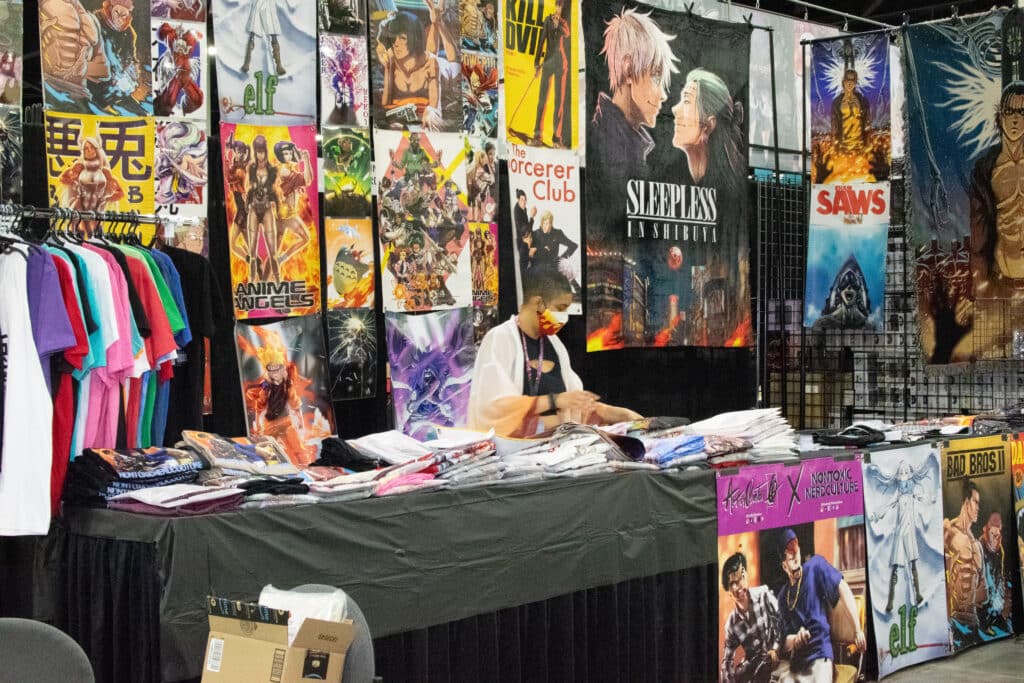
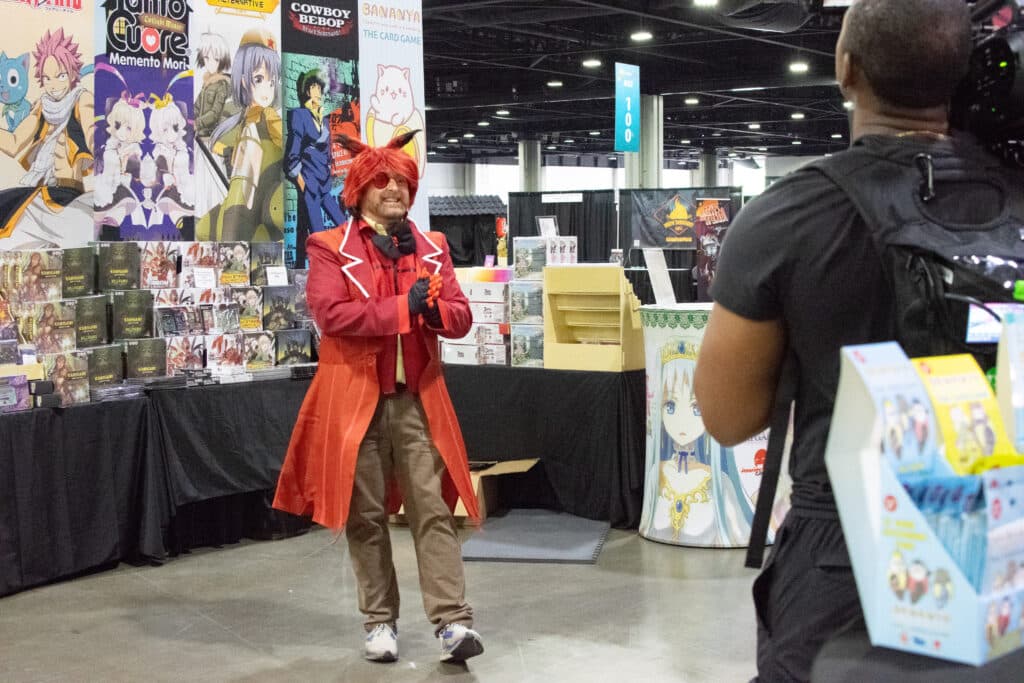
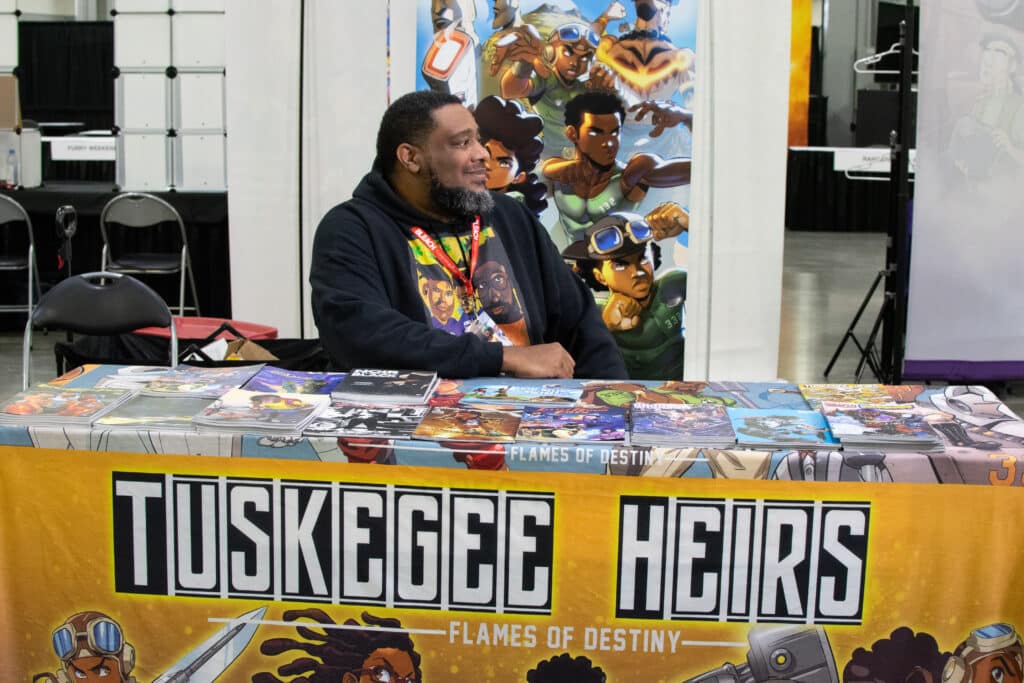
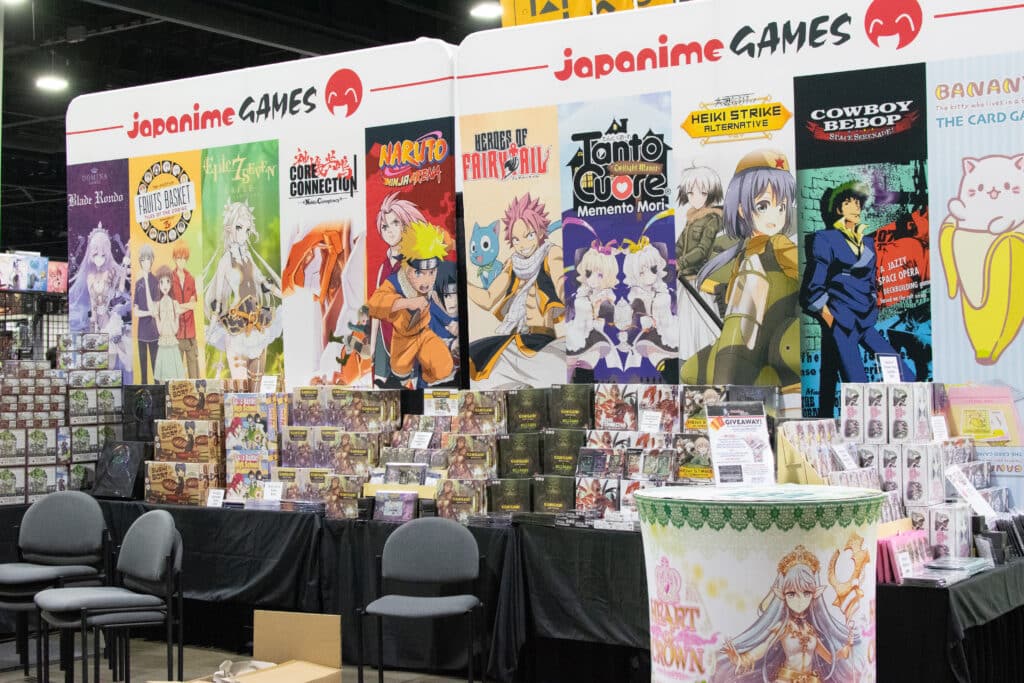
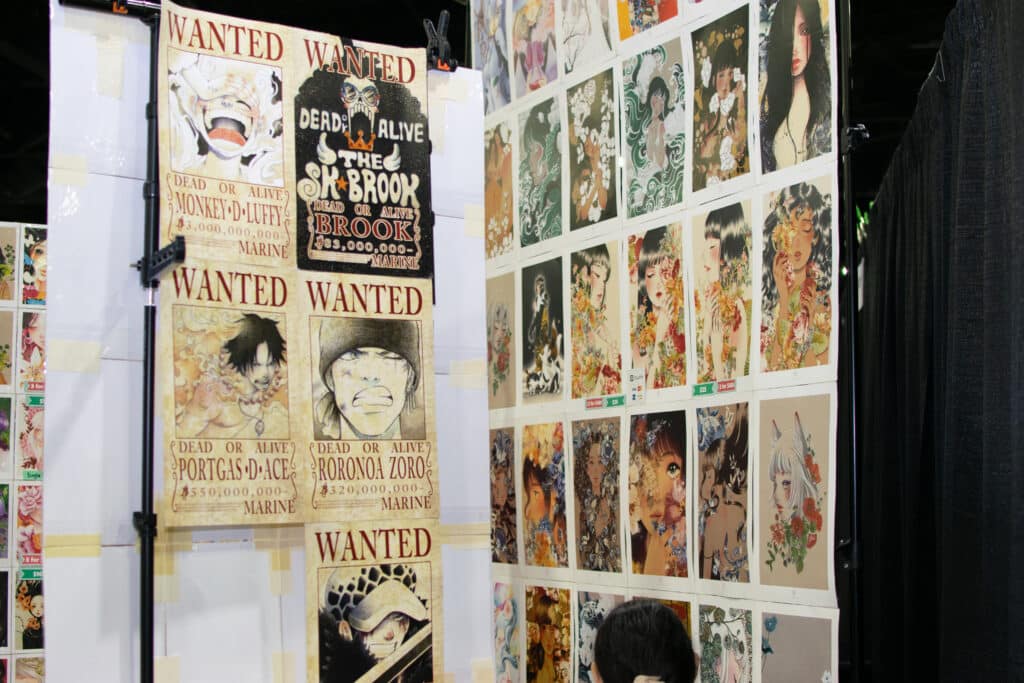
Returning fan favorites include the Artist Alley, Exhibitor’s Hall, panels, raves and afterparties, the cosplay showcase, Disney singing contest and movie screenings.
There’s also a full schedule of workshops, live performances and appearances from over 150 special guests from across industries.
Featured guests
In fact, one of MomoCon’s biggest draws is the celebrity guests on hand each year for autographs and special sessions. A few of this year’s guests include:
Darryl McDaniels (from RunDMC) — a comic book and children’s book author who has also started a line of cookies.
Shadia Amin — a Colombian cartoonist from Atlanta (SCAD grad) currently working on graphic novels.
Greg Burnham — a comic book writer from Norcross who’s created indie comic hits “Tuskegee Heirs,” “The Search For Sadiqah,” “Little Rock Files” and “The Story of Solace.” His most recent is called “Bridges,” a story of four super-powered girls who band together to save Oakland from a group of evil bio-terrorists.
Brian Stelfreeze — comic book artist and an original member of Atlanta’s famed Gaijin Studios. Stelfreeze has worked with Marvel, DC and 12 Gauge comics on titles that include Batman, The Black Panther and Catwoman.
Daron Nefcy — creator and executive producer of Disney’s “Star vs. the Forces of Evil,” Netflix’s “We the People” and Nick’s “Robot and Monster.”
Reed Shannon — Raleigh, NC-based actor and star of Netflix’s “Arcane.”
Mick Wingert — voice actor whose work has appeared in “Arcane,” “What If?,” and “Kung Fu Panda.”
David Vincent — voice actor and producer who’s worked in animation, anime, video games (Resident Evil, Halo, Tekken, Super Street Fighter) and television (“NCIS,” “Criminal Minds,” “The Mentalist”).
Ryō Horikawa — Japanese voice of Vegeta in “Dragon Ball Z,” plus roles in “Saint Seiya” (Andromeda Shun); “Detective CONAN” (Hattori Heiji); and “Mobile Suit Gundam”
Chris Sabat — veteran voice actor, director and producer with a résumé that reads like a list of anime’s greatest hits. From the proud Saiyan prince Vegeta and the stoic swordsman Roronoa Zoro to the world’s greatest hero, All Might, and the slightly tipsy Yami from “Black Clover.”
A full list of 2025 celebrity guests can be found here.
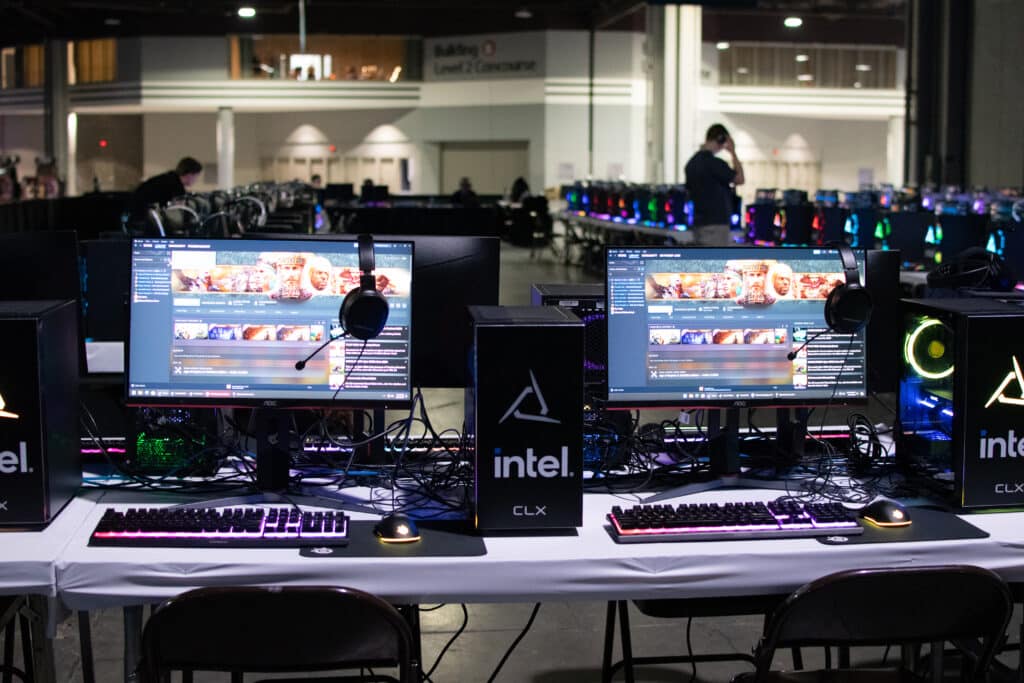

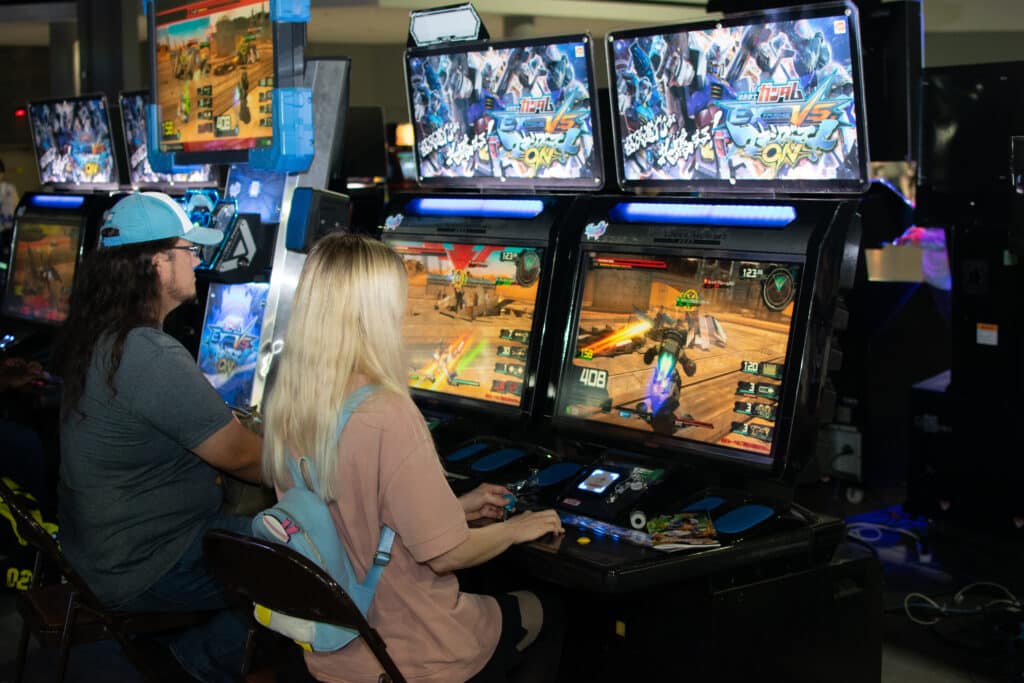
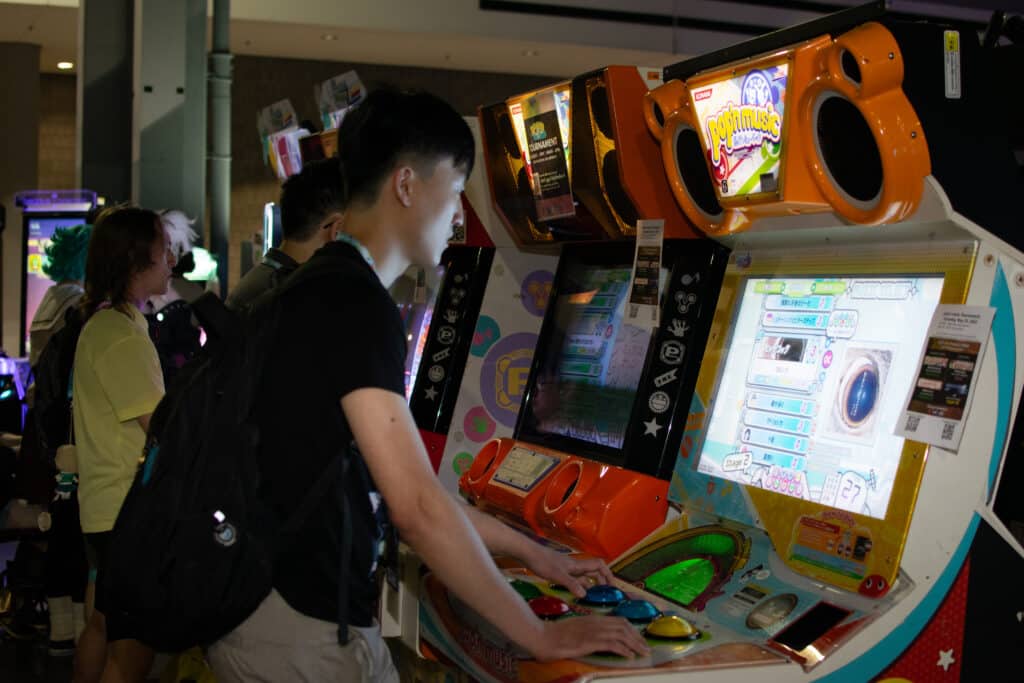
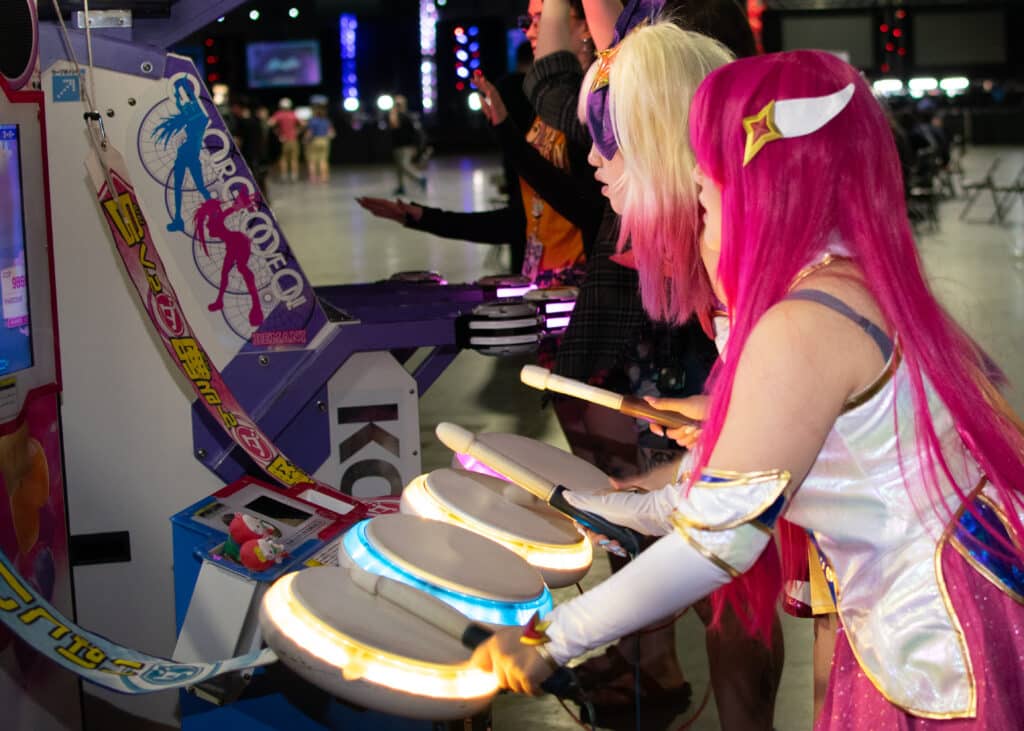
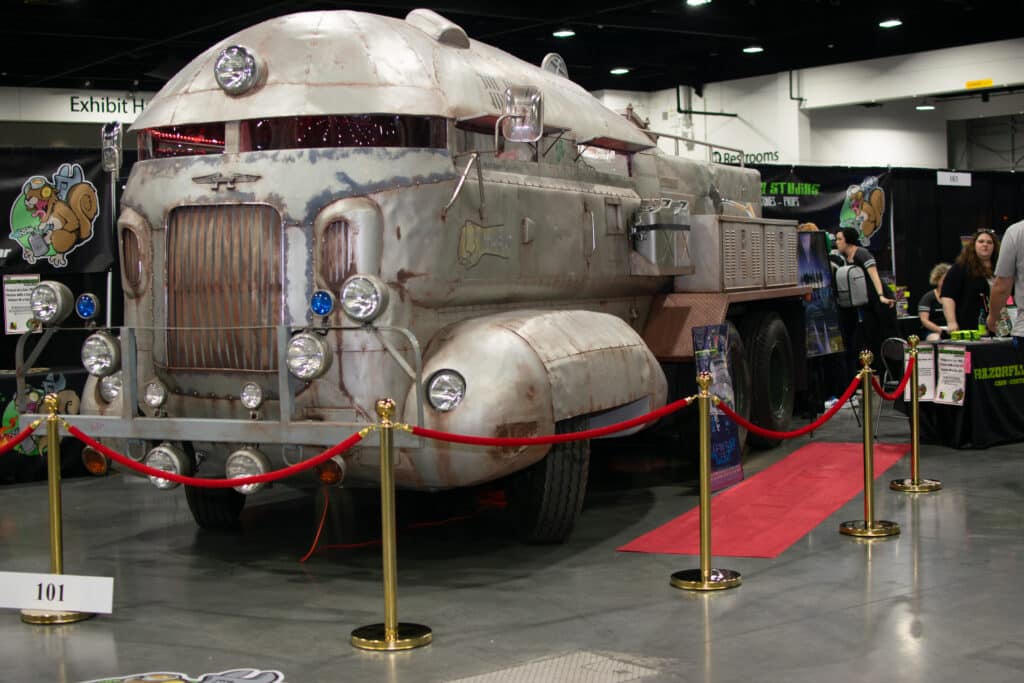
MomoCon by the numbers
- Over the years, MomoCon has grown from a 700 person, on-campus gathering to the largest event in the southeastern U.S. for fans of gaming, animation, cosplay, comics and tabletop games.
- Thousands of attendees come out to each year to enjoy gaming, costuming (cosplay), browsing the huge exhibitor’s hall and meeting celebrity voice talent, designers and writers from their favorite shows, games and comics.
- It features the second largest open game hall in the United States. Open non-stop over the weekend, it spans 300,000+ sq. ft. of arcades, esports stages, PC and LAN gaming, console tournaments and freeplay, board and card gaming, RPGs and LARP.
- More than 90,000 square feet is dedicated to tabletop games, board games, card games, role playing games and miniatures. Want to learn a new game? Instructors are on hand to teach the hottest new games (and old games too).
- There’s also 300,000 square feet for celebrity autographs, vendors, workshops and international and indie game developers.
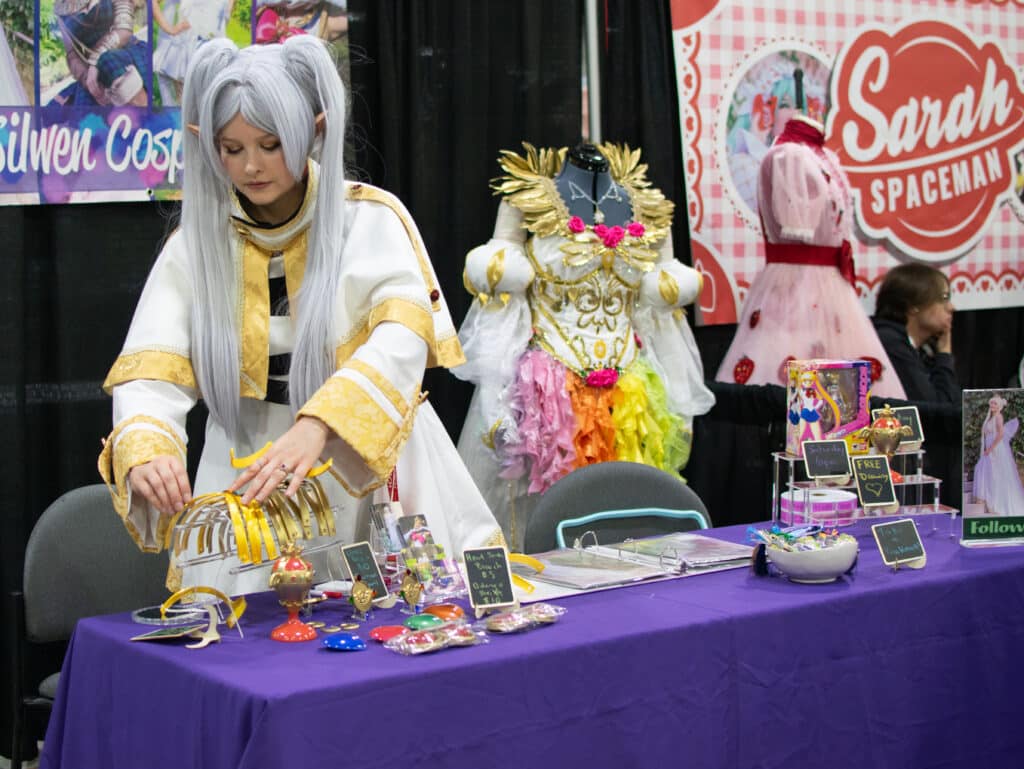

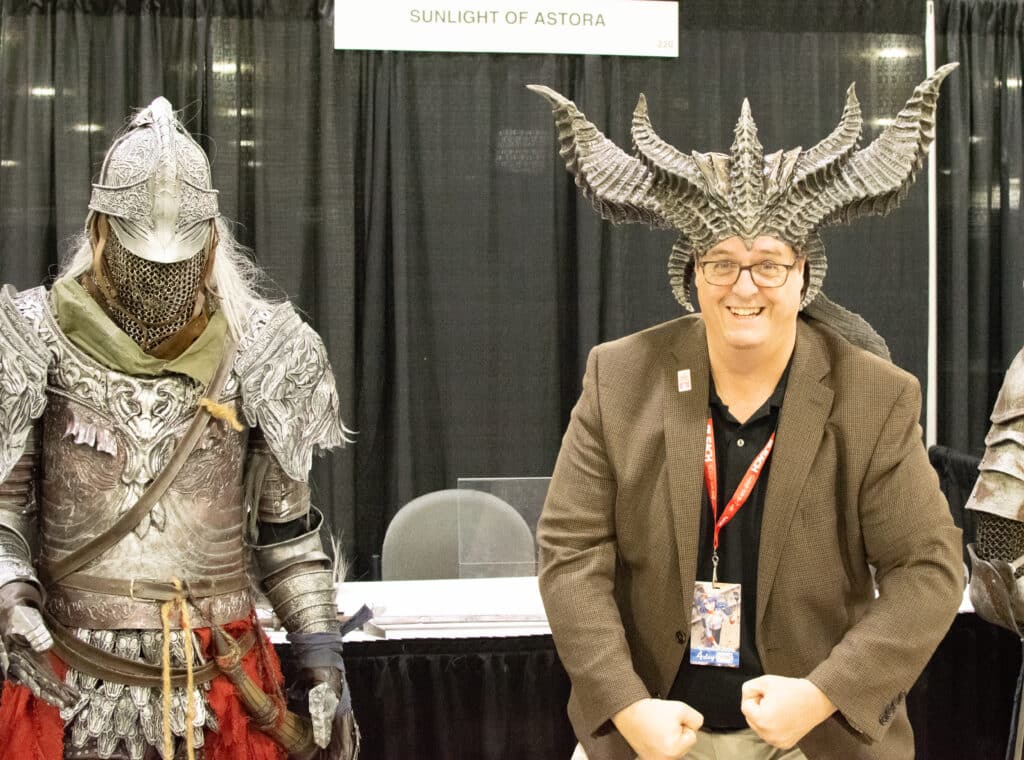
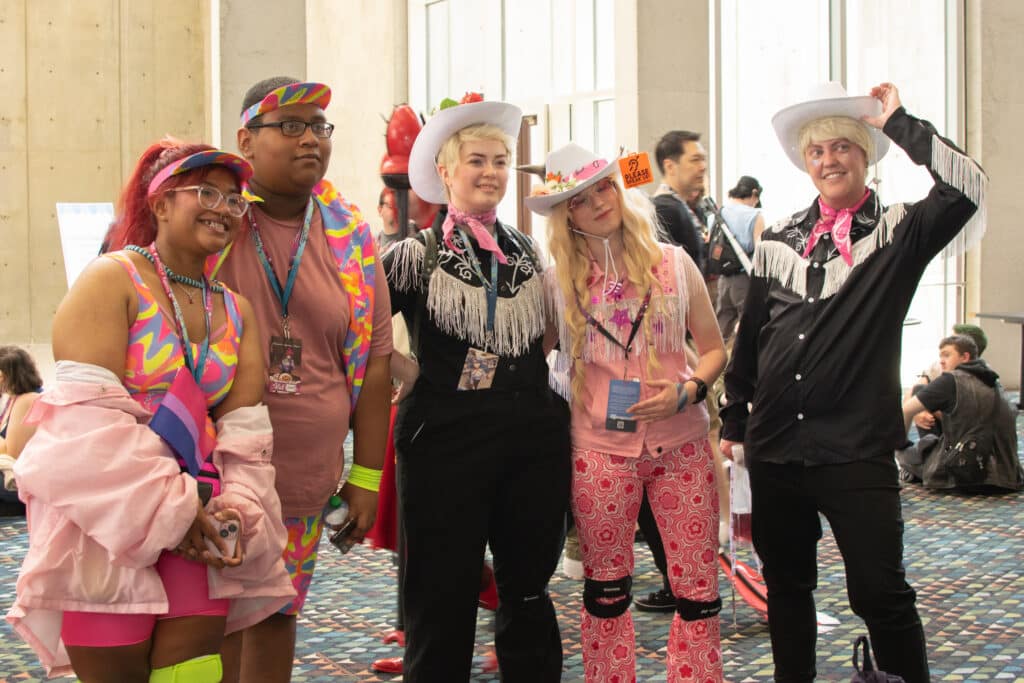
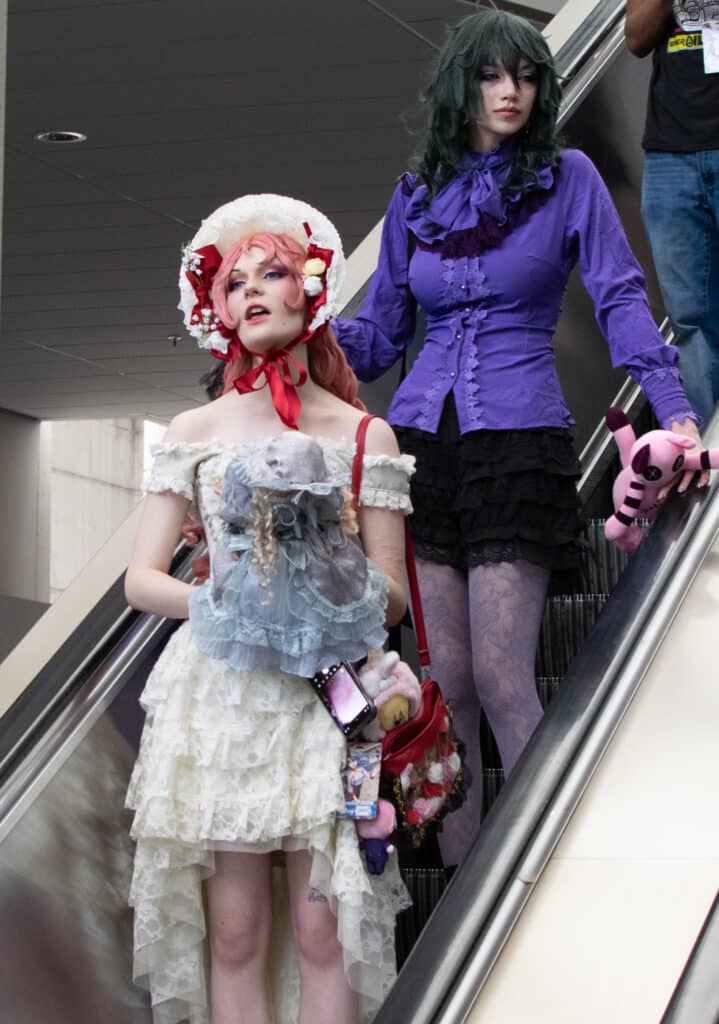
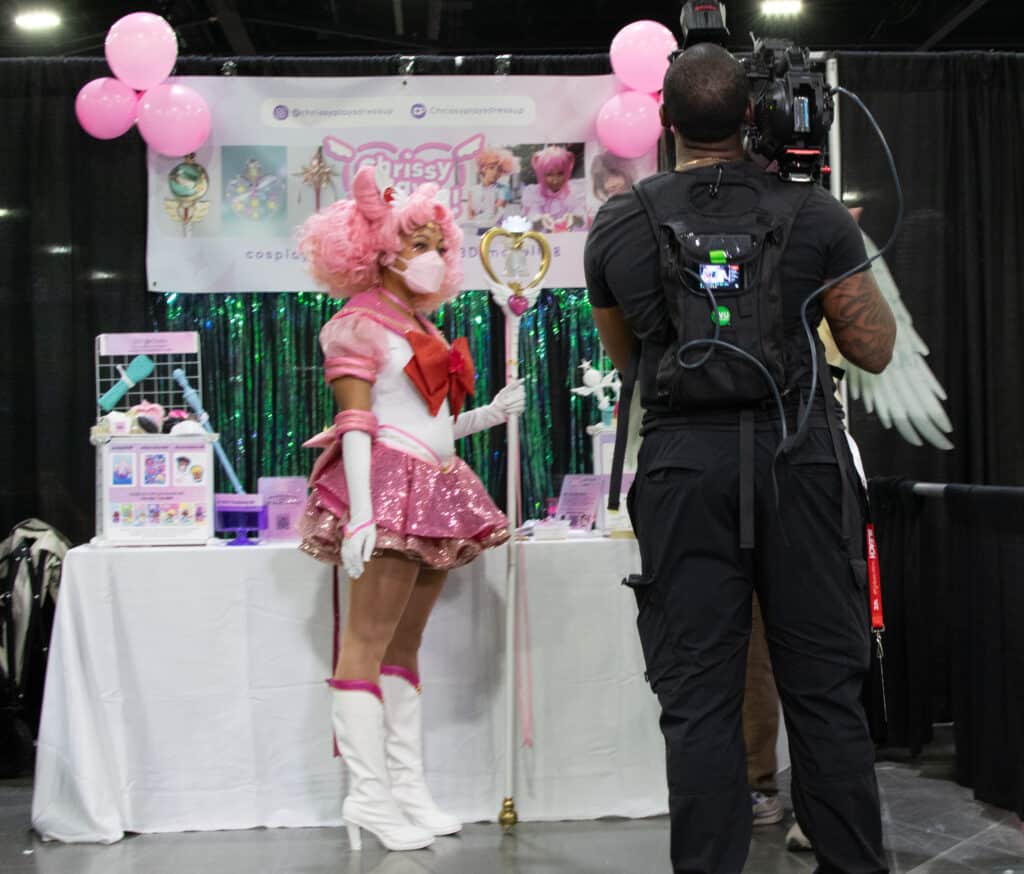
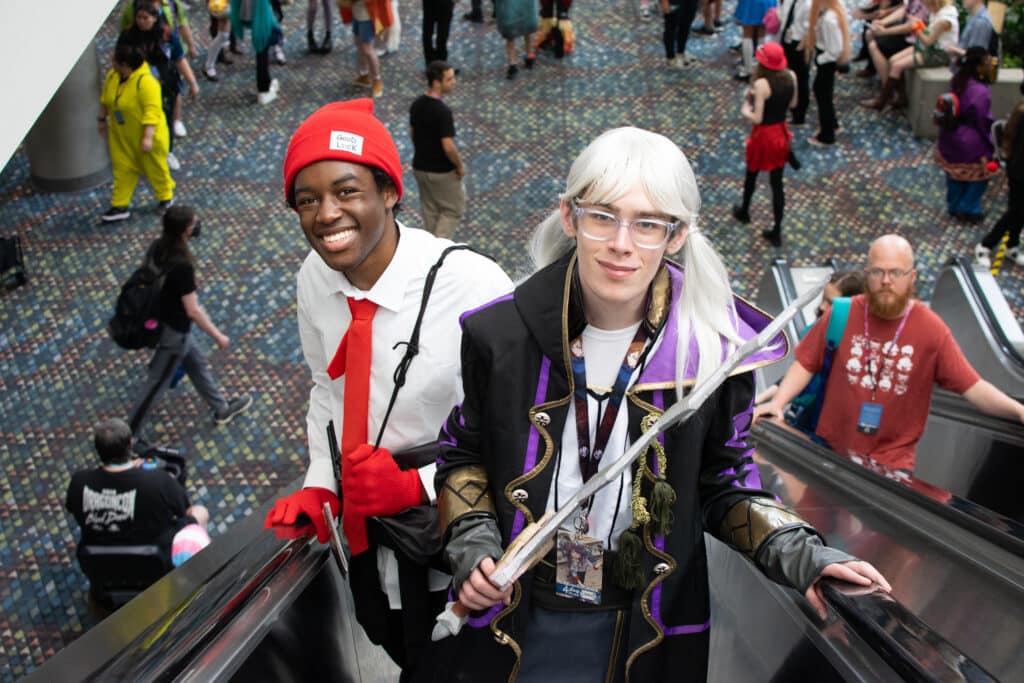
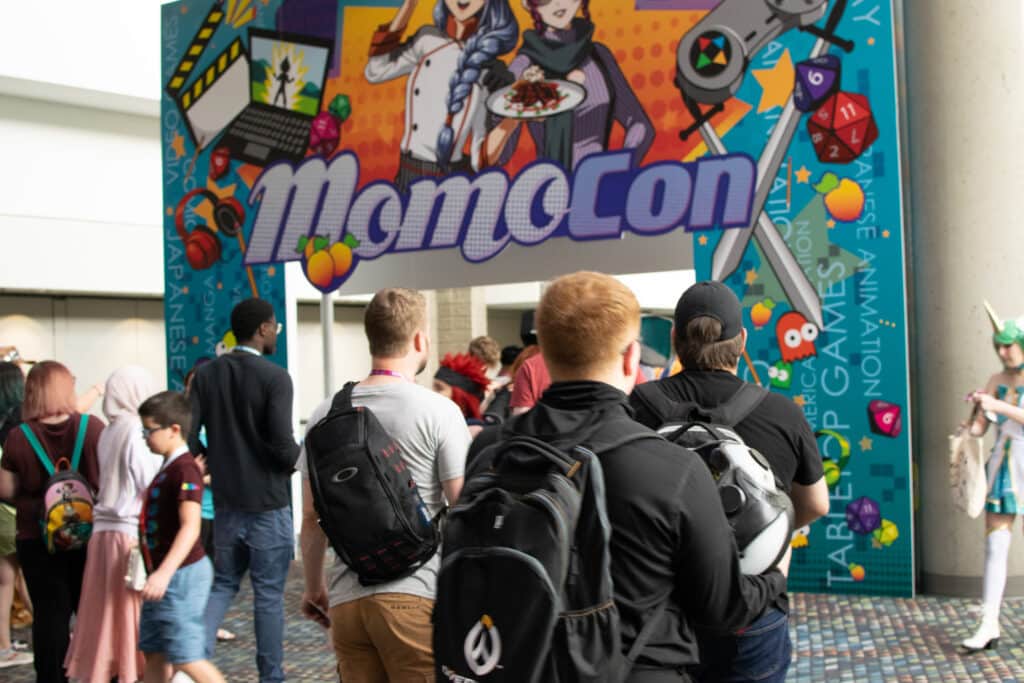
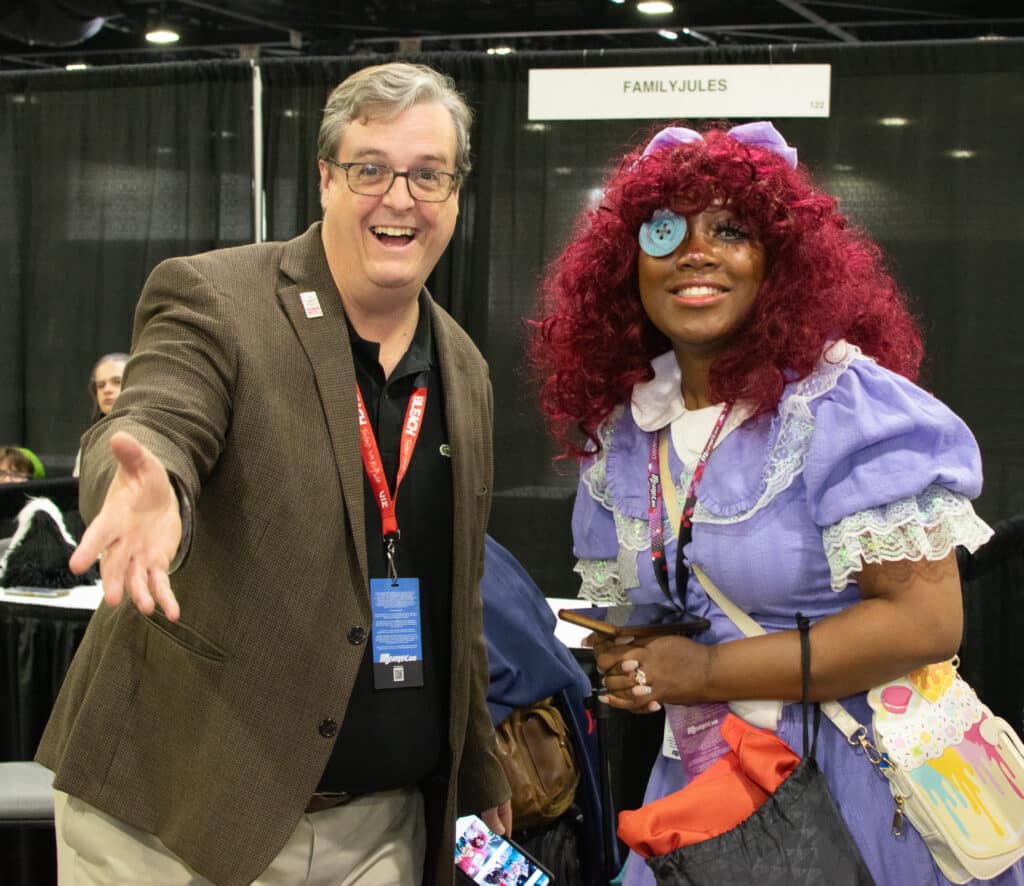
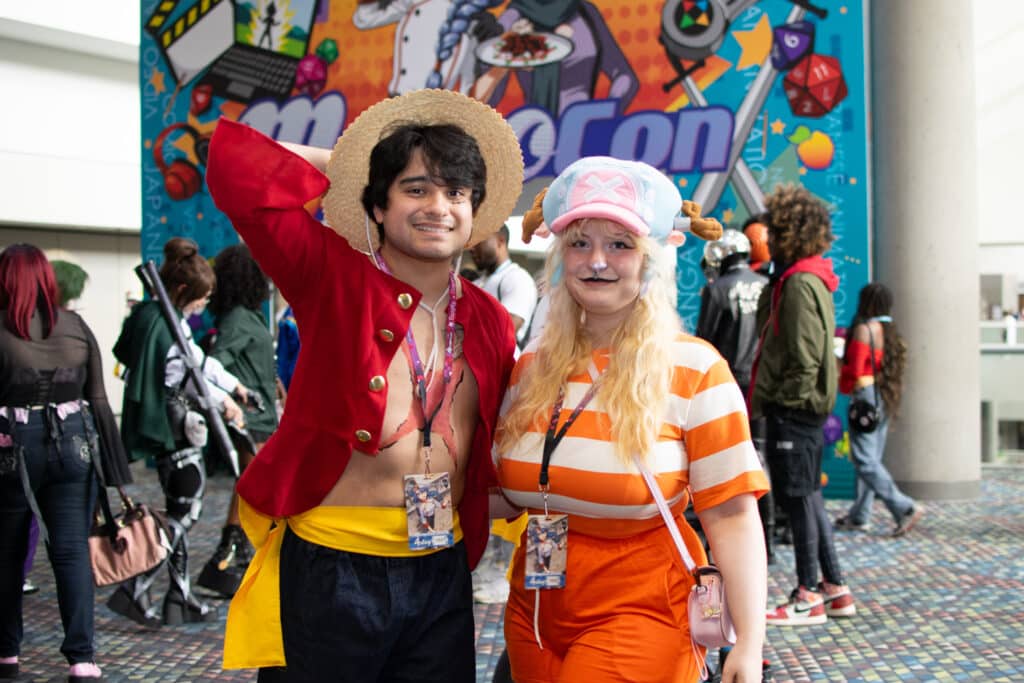
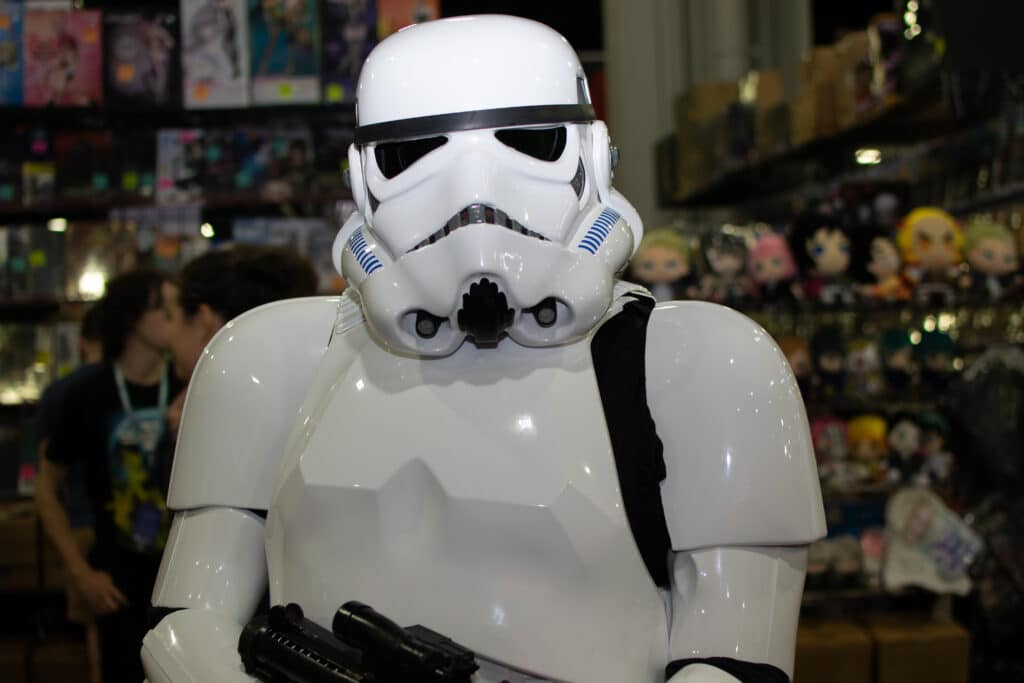
The details
MomoCon runs from 2 p.m. Thursday, May 22 through 5 p.m. Sunday, May 25 at the Georgia World Congress Center (Hall B). Additional events may take place at the nearby Omni Hotel and the Hilton Signia Downtown.
Registration is open now, with four-day or single day passes available. Four-day membership passes are $105 plus fees. Single days range from $50–$65 (kids 9 and under free).
Game tournament registration and separate concert tickets are also available.
Parking is limited in the area, and the GWCC lots do not take same-day reservations, so attendees are encouraged to take MARTA, if possible. The GWCC station is a short walk to the convention center.
You’ll find full details and a schedule of planned events at momocon.com.
Related
Around Atlanta
Mike Schleifer to Leave Alliance for Lincoln Center Theater
Published
2 months agoon
March 26, 2025
After leading Atlanta’s Alliance Theatre through two major renovation projects, a global pandemic and more than 100 productions over 11 years, Managing Director, Mike Schleifer, will leave the Alliance at the end of the year to become the managing director of Lincoln Center Theater in New York.
As managing director of the Alliance, Schleifer oversees all operational, marketing, financial, fundraising and shared services activities. In his new role, Schleifer will oversee LCT’s financial and operational health and ensure long-term sustainability and growth. He will also work to align strategic planning with artistic goals, manage the theater’s union relationships, lead budgeting, marketing and capital planning efforts and identify and develop new revenue opportunities.
“While it’s rare to find a managing director who is equally brilliant at the operational and financial part of the job, it’s simply unheard of to find one who excels on those fronts and leads with such unabashed heart, vision and humor,” said Jennings Hertz Artistic Directors Tinashe Kajese-Bolden and Christopher Moses in a joint statement.
“For the past 11 years, we had the unfathomably good fortune to have all that and more in Mike Schleifer. Mike’s willingness to bet on our mission and invest in the extraordinary talent of the Alliance staff allowed us to realize aspirational dreams we never would have dared to dream without his encouragement and faith. We’ll miss him daily but cannot wait to witness the joy he’ll bring to the Lincoln Center Theater.”
During his tenure
During his tenure with the Alliance, Schleifer led the administrative and producing teams on over 100 productions and moved four shows to Broadway, including last season’s “Water for Elephants” and this season’s “Maybe Happy Ending.”
He spearheaded the $36 million renovation of the award-winning Coca-Cola Stage and is currently leading the $26 million renovation of the Goizueta Stage for Youth and Families. Under his leadership, the Alliance more than doubled its operating budget, tripled its endowment and continued to lead the country in work developed for young audiences.
“It’s been a true honor and privilege to work, lead and learn at the Alliance Theatre for the last eleven years,” said Schleifer. “I’m deeply grateful to the staff, artists and audiences of the Alliance Theatre and Woodruff Arts Center who have made this journey so rewarding.”
“We’ve achieved remarkable milestones — from moving productions to Broadway to completing transformative capital projects,” he continued. “I’m excited for what’s next, but I won’t be leaving until we cut the ribbon on the new Goizueta Stage for Youth and Families — a project that reflects the Alliance’s deep commitment to the next generation of theatergoers, both with the physical theater space and with the endowment we’re raising to make the work on that stage financially accessible for all.”
Additional roles
In addition to his work at the Alliance, Schleifer serves on the boards of the League of Resident Theatres and True Colors Theatre Company. In 2018 he co-founded Volute Partners, a theatre consultancy focused on capital projects and the subsequent operational support and budgets needed to sustain them.
“We are immensely grateful for Mike’s leadership and tireless dedication to the Alliance Theatre. His vision, passion, and expertise have left an indelible mark on this organization,” said Hala Moddelmog, president and CEO of Woodruff Arts Center.
“We take great pride in seeing him step into this well-deserved opportunity, knowing he will make a lasting impact at Lincoln Center Theater.”
New leadership
The leadership of the Woodruff Arts Center, with support from members of the Alliance Theatre Board of Directors, will conduct a national search for the Alliance’s next managing director, led by executive search firm, Corps Team.
“On behalf of the Alliance’s board of directors, we want to thank Mike for more than a decade of service to the Alliance and Atlanta community,” said Kendrick Smith, Alliance Theatre Board of Directors chair. “He oversaw a period of unprecedented growth with a spirit of collaboration and unwavering commitment to the theater’s artistic vision.”
“As we begin the national search for his successor, we remain dedicated to the theater’s mission of expanding hearts and minds, on stage and off.”
About the Alliance Theatre
Founded in 1968, Alliance Theatre is the leading producing theater in the Southeast, reaching more than 165,000 patrons annually.
The Alliance is led by Jennings Hertz Artistic Directors Tinashe Kajese-Bolden and Christopher Moses and Managing Director Mike Schleifer and is a recipient of the Regional Theatre Tony Award® for sustained excellence in programming, education and community engagement.
In January 2019, the Alliance opened its new, state-of-the-art performance space, The Coca-Cola Stage at Alliance Theatre.
Known for its high artistic standards and national role in creating significant theatrical works, the Alliance has premiered more than 140 productions, including eleven that have transferred to Broadway.
Additionally, the Alliance education department reaches more than 90,000 students annually through performances, classes, camps and in-school initiatives designed to support teachers and enhance student learning.
The Alliance Theatre values community, curiosity, collaboration and excellence and is dedicated to representing Atlanta’s diverse community with the stories they tell, the artists, staff and leadership they employ and the audiences they serve.
For more information, visit alliancetheatre.org.
Related
Read the Digital Edition
Subscribe
Keep Up With Peachtree Corners News
Join our mailing list to receive the latest news and updates from our team.
You have Successfully Subscribed!

From Boardrooms to the Himalayas: Vandana’s Journey to Purpose and Growing with Intention [Podcast]

Guardians of the Jukebox to Play the VoxStage on May 31

“Geek Culture” Shines at 2025 MomoCon

Brandon Branham Honored for Transformative Leadership in Peachtree Corners

Music Matters Productions Expands Peachtree Corners Headquarters

Celebration and Community: ICAGeorgia Wraps Up School Year with Two Festive Events

Vox-Pop-Uli Launches RED Initiative for Veterans’ Support

The PCBA Awards $500 to Light Up The Corners at After-Hours Event

Vox-Pop-Uli Launches RED Initiative for Veterans’ Support

The PCBA Awards $500 to Light Up The Corners at After-Hours Event

“Geek Culture” Shines at 2025 MomoCon

Celebration and Community: ICAGeorgia Wraps Up School Year with Two Festive Events

Guardians of the Jukebox to Play the VoxStage on May 31

Music Matters Productions Expands Peachtree Corners Headquarters

Brandon Branham Honored for Transformative Leadership in Peachtree Corners

From Boardrooms to the Himalayas: Vandana’s Journey to Purpose and Growing with Intention [Podcast]

Light up the Corners [Video]

Capitalist Sage: Business Leadership in Your Community [Podcast]

Cliff Bramble: A Culinary Adventure through Italy

Top 10 Brunch Places in Gwinnett County

A Hunger for Hospitality

THE CORNERS EPISODE 3 – BLAXICAN PART 1

Top 10 Indoor Things To Do This Winter

The ED Hour: What it takes to Remove Barriers from Education
